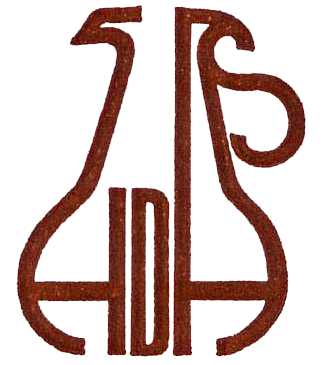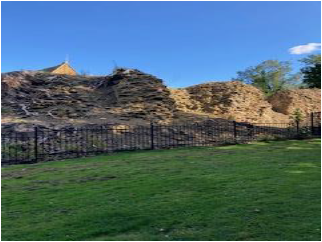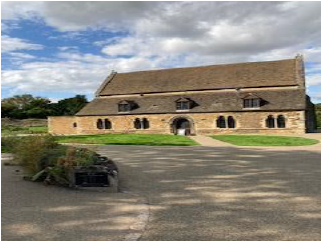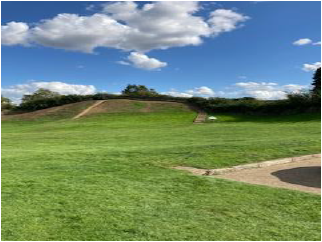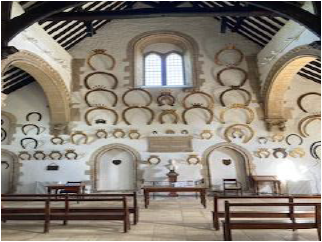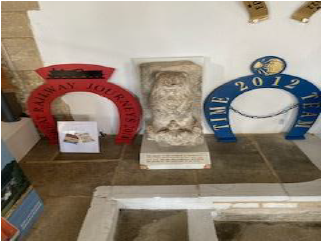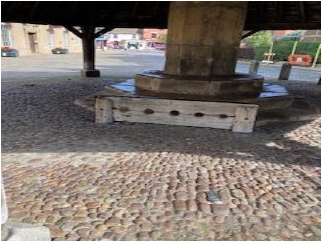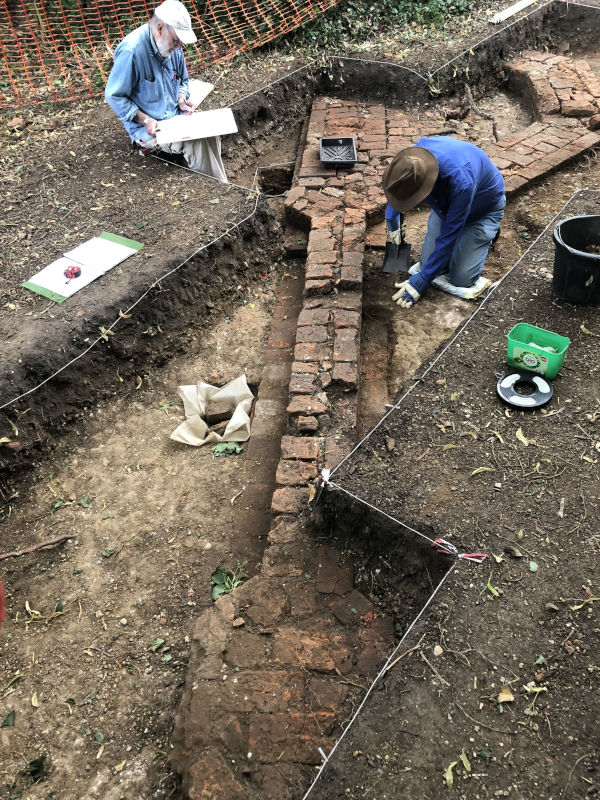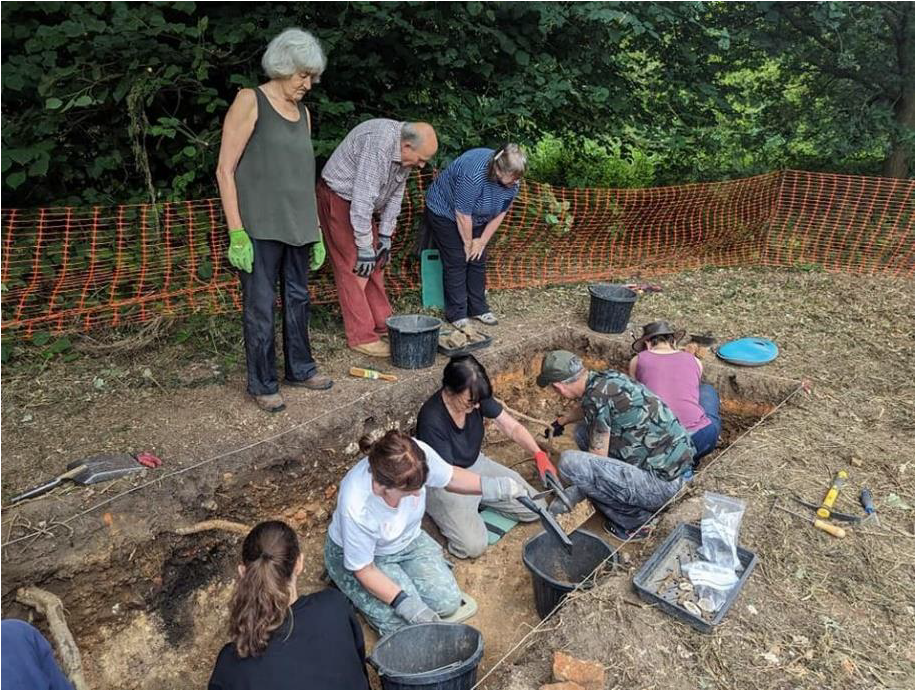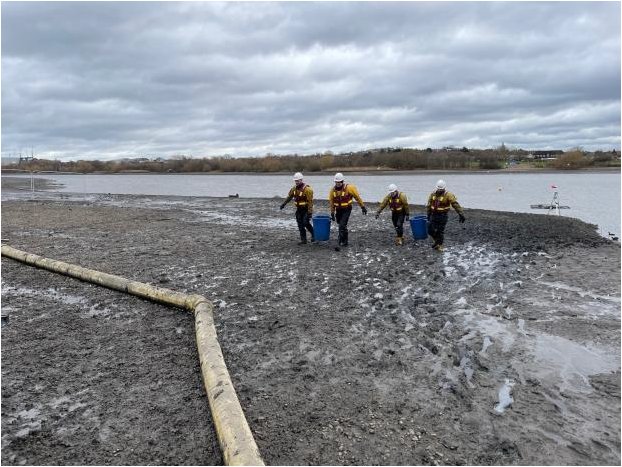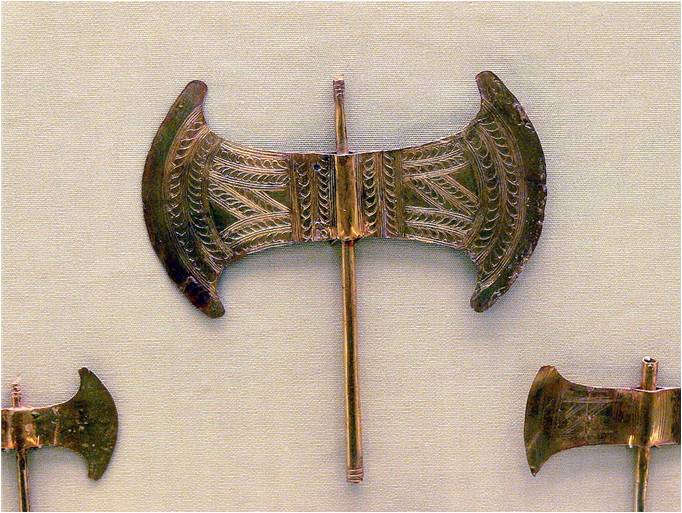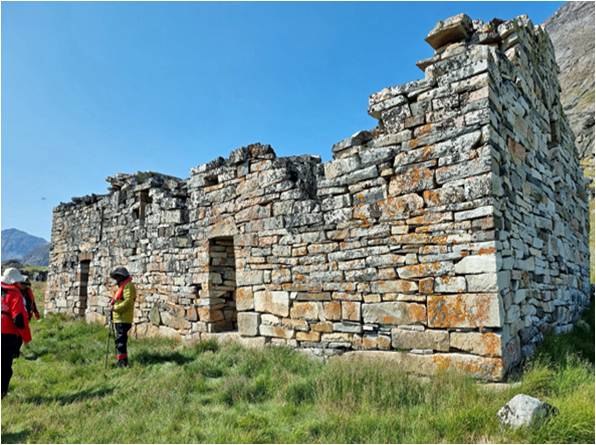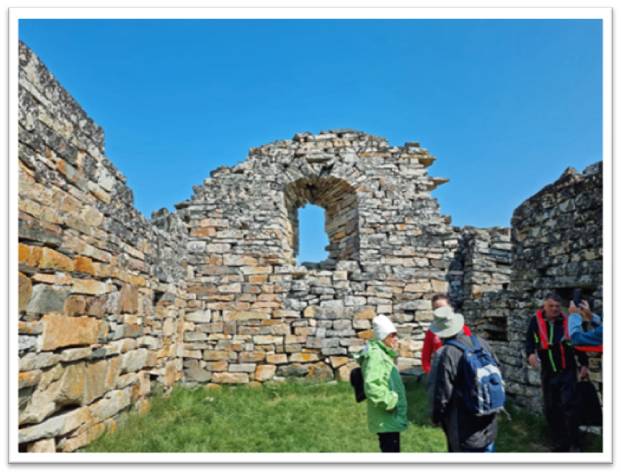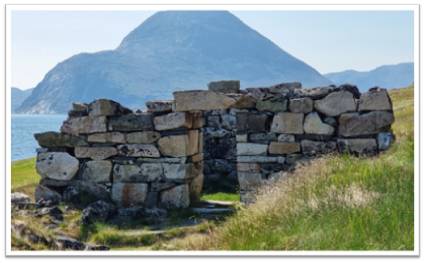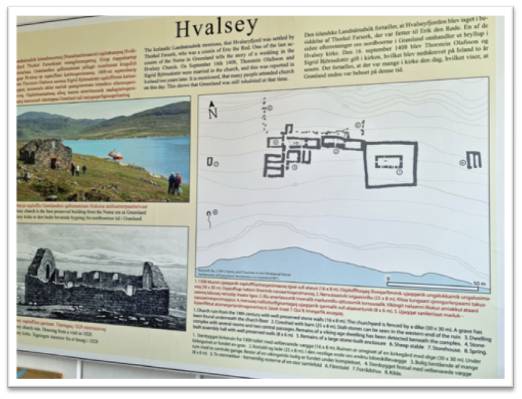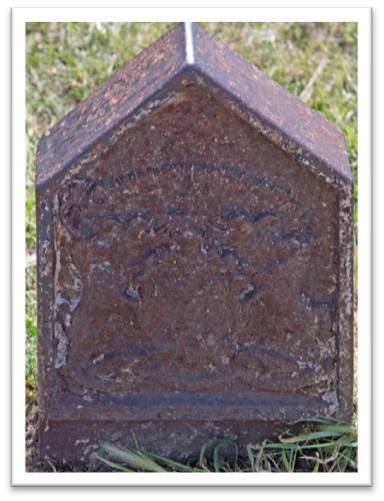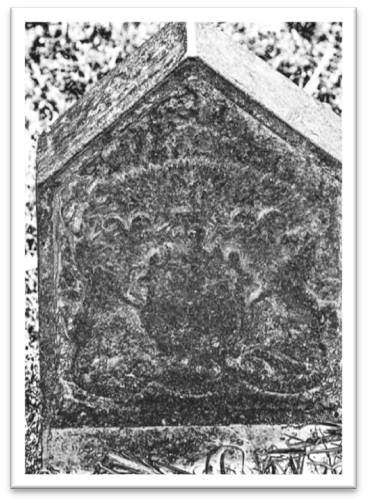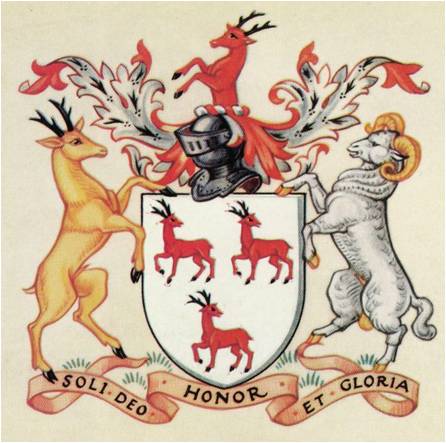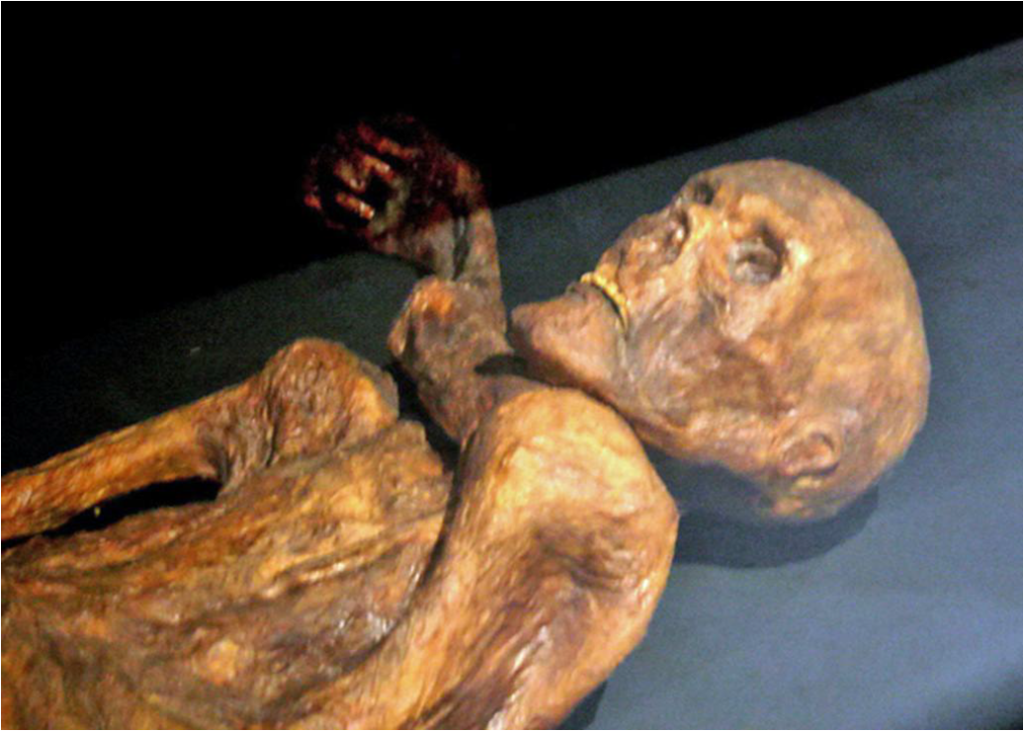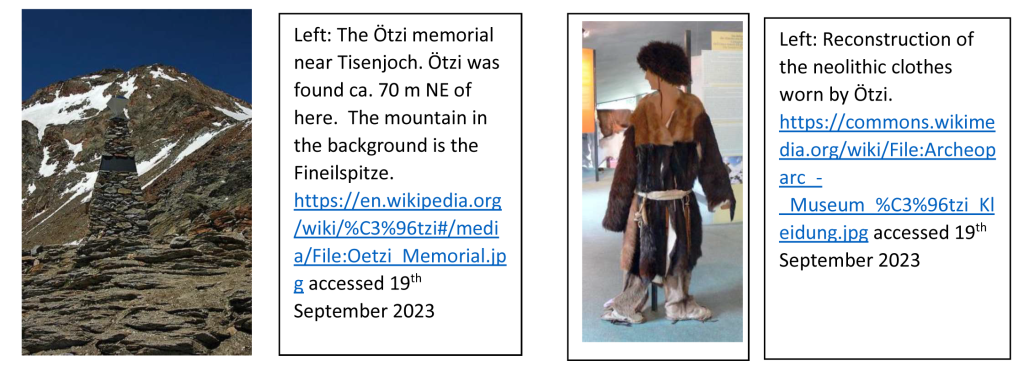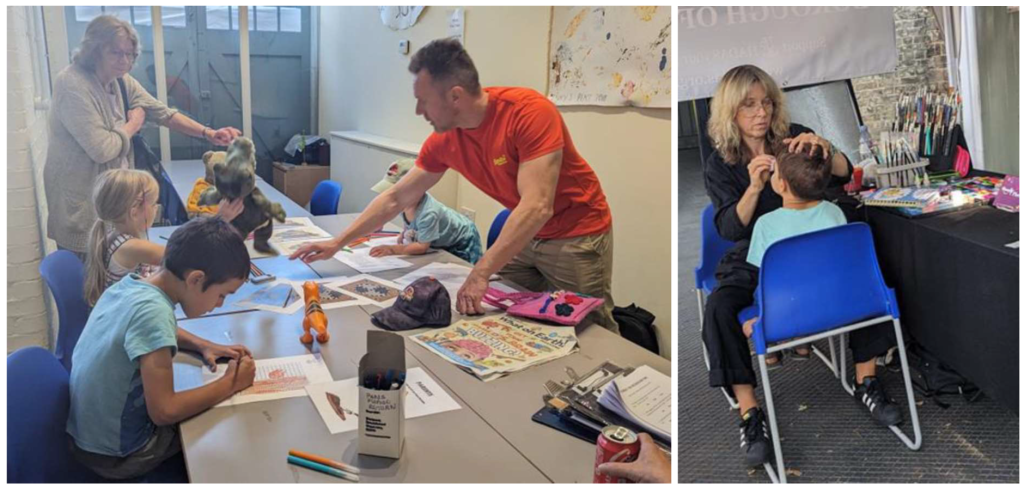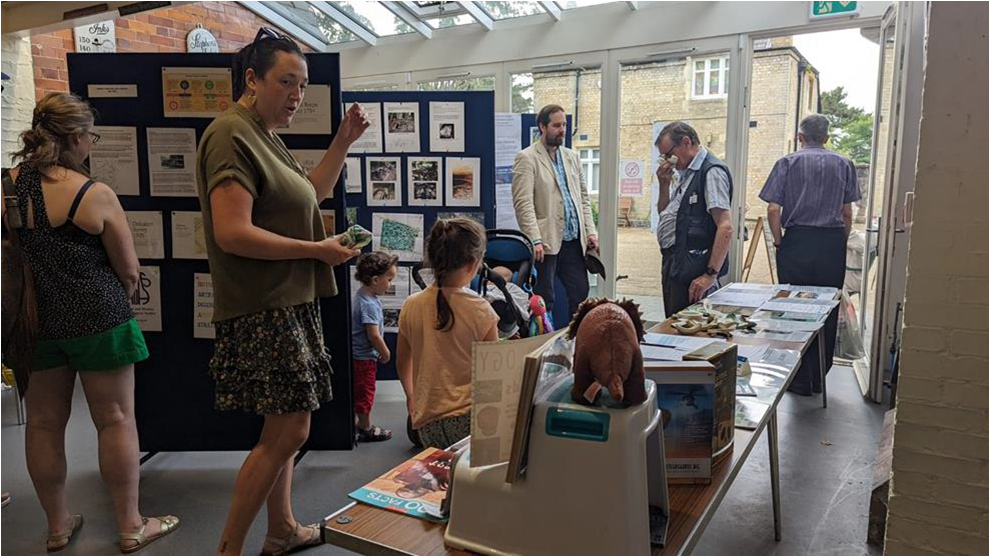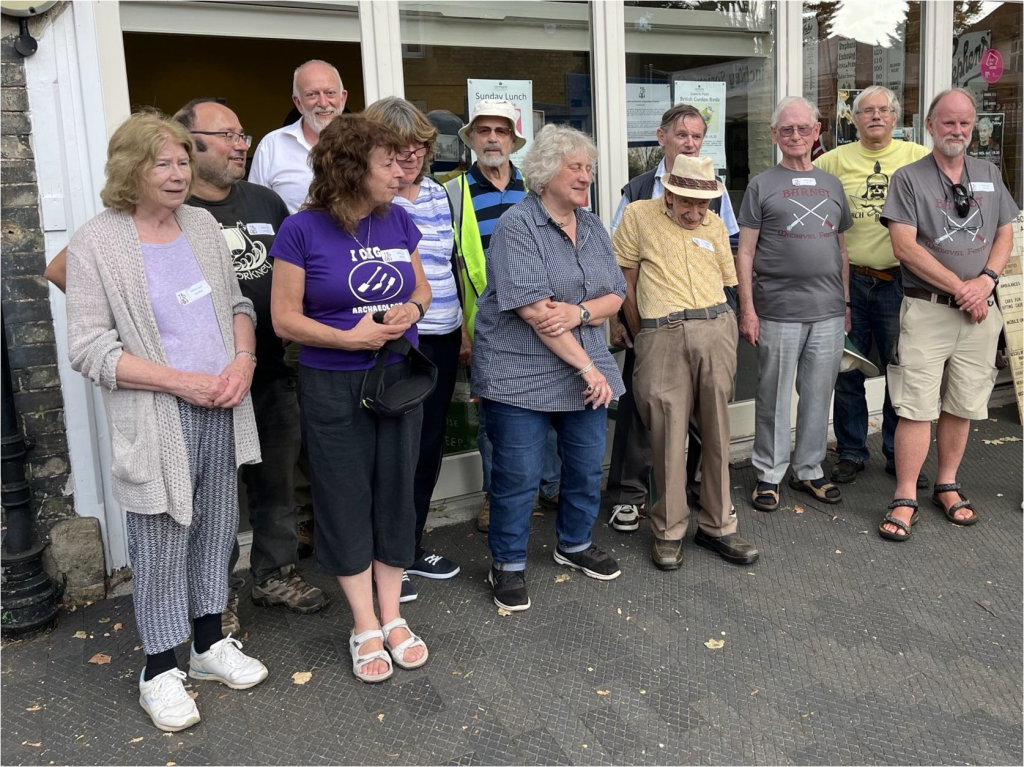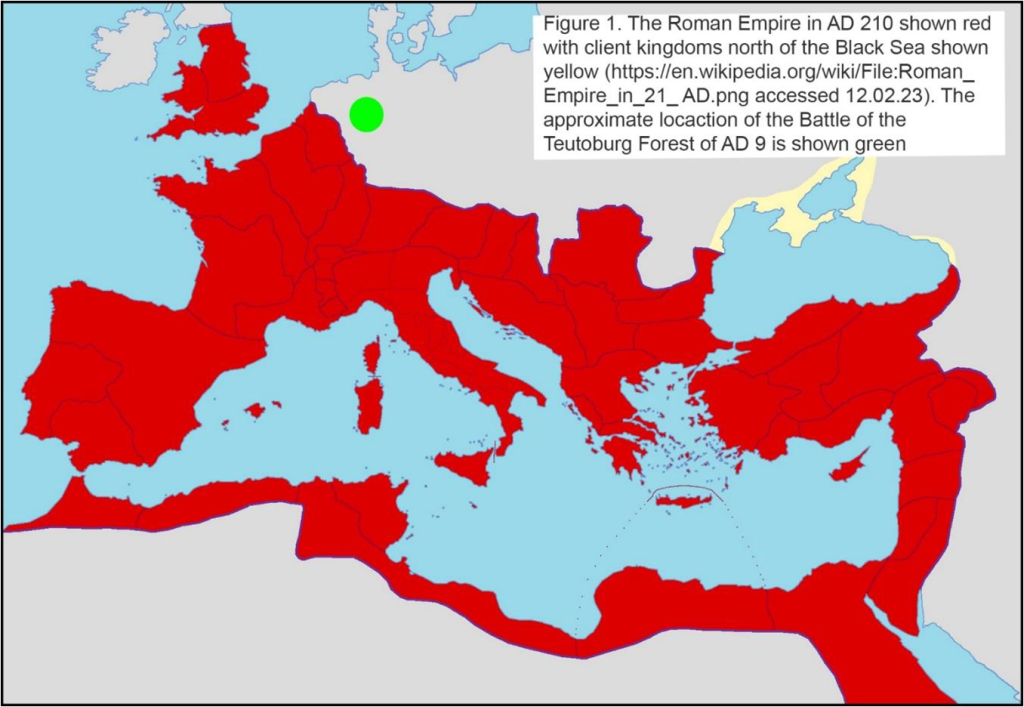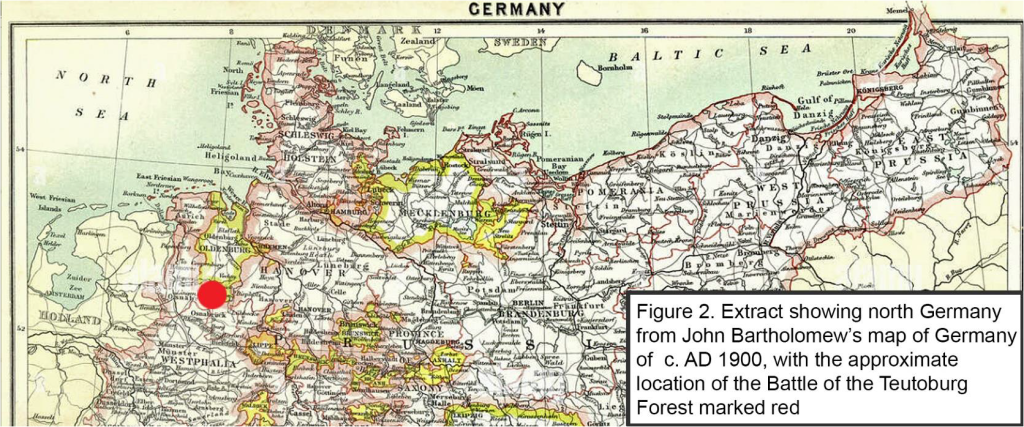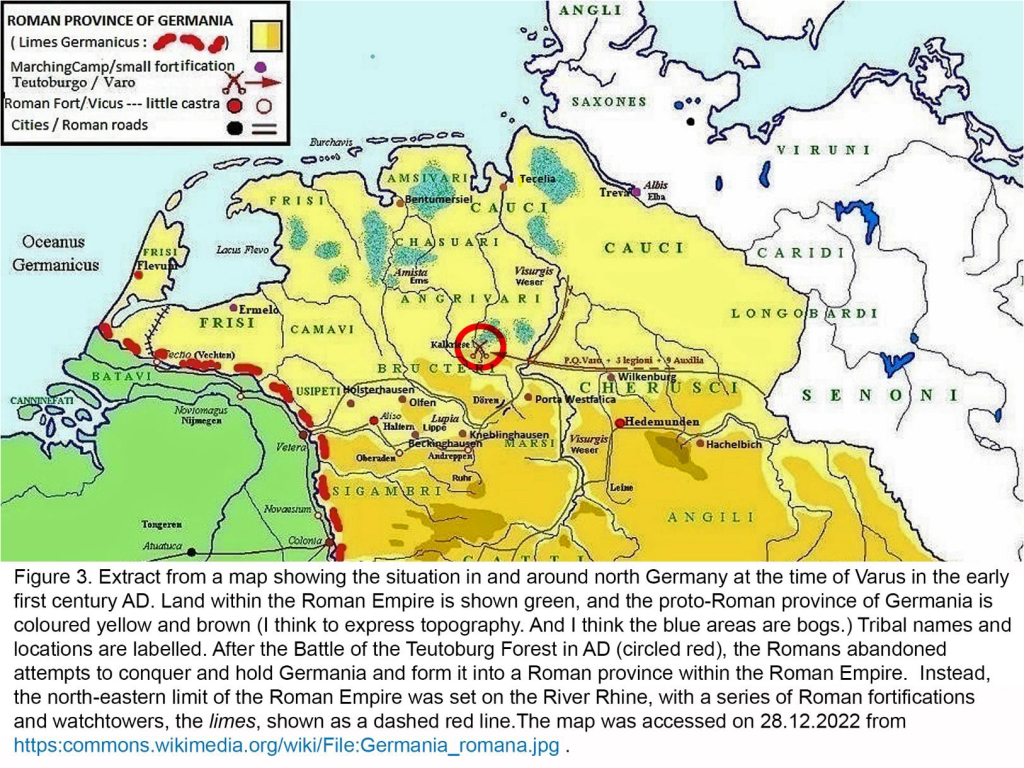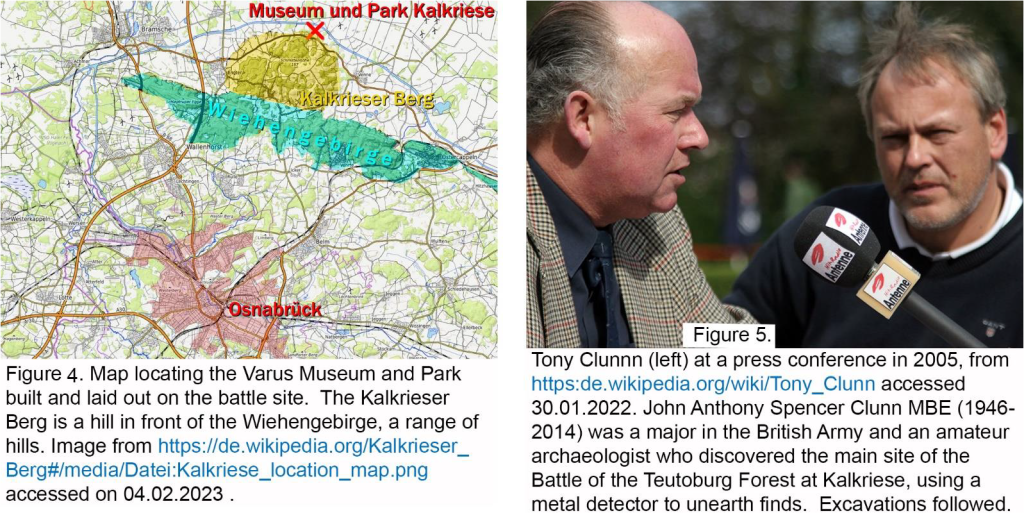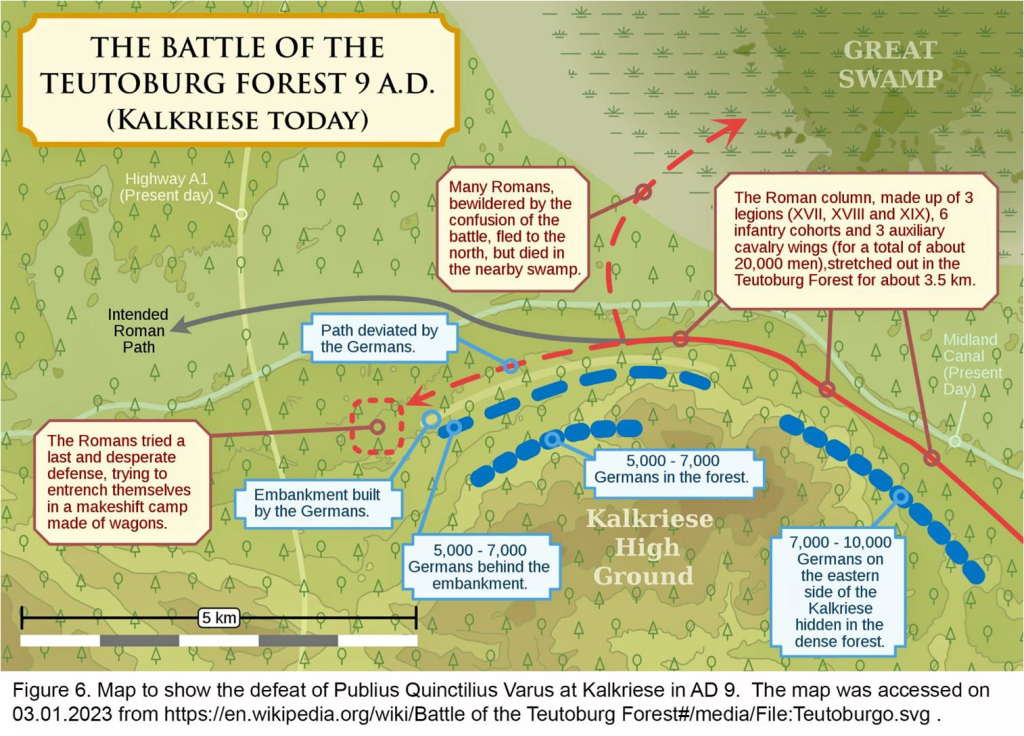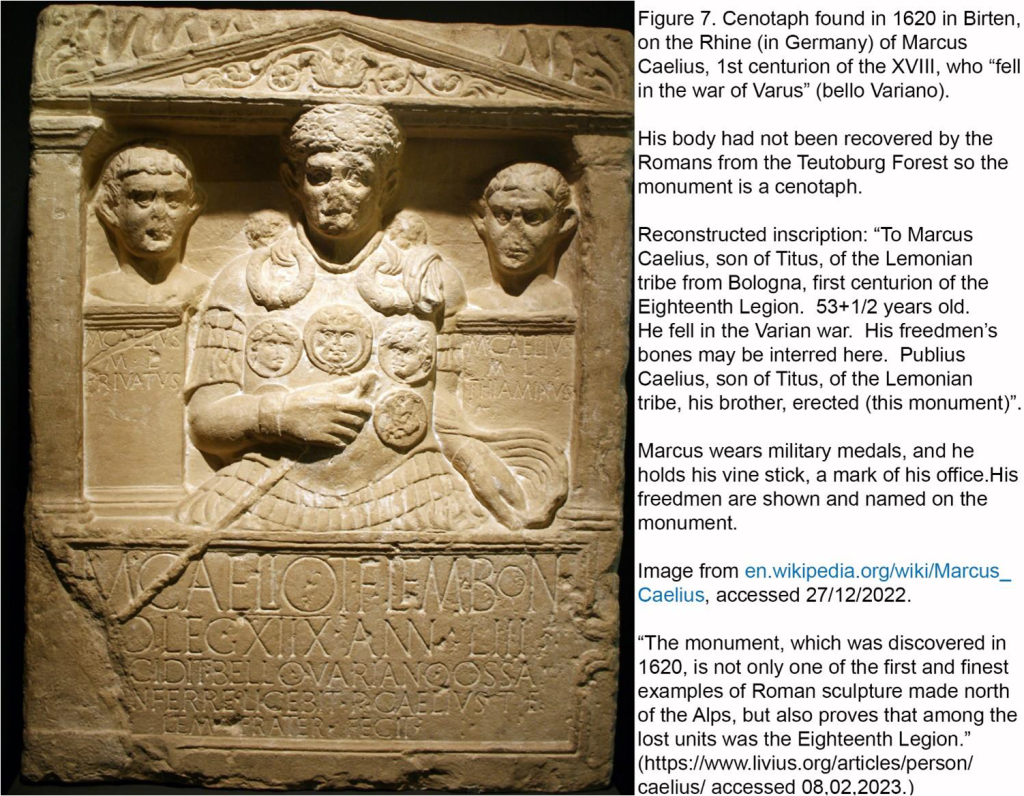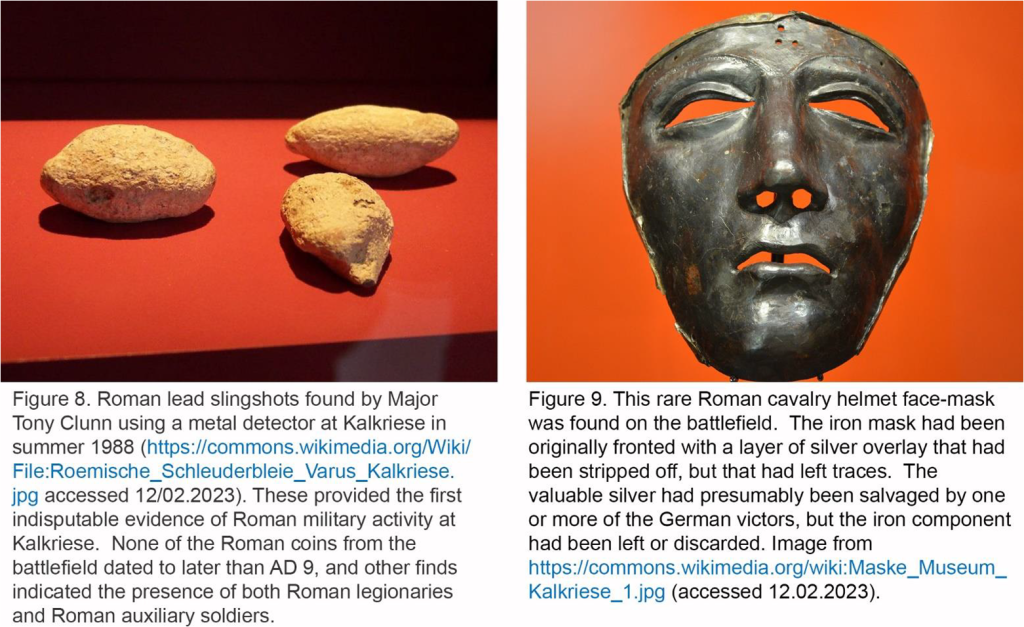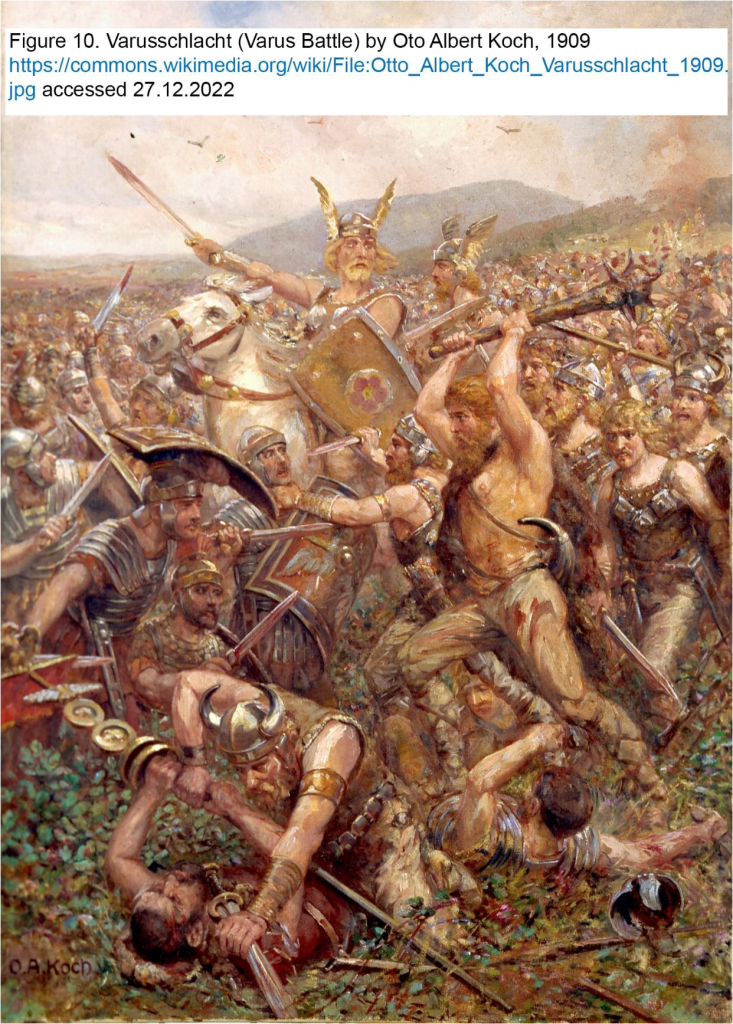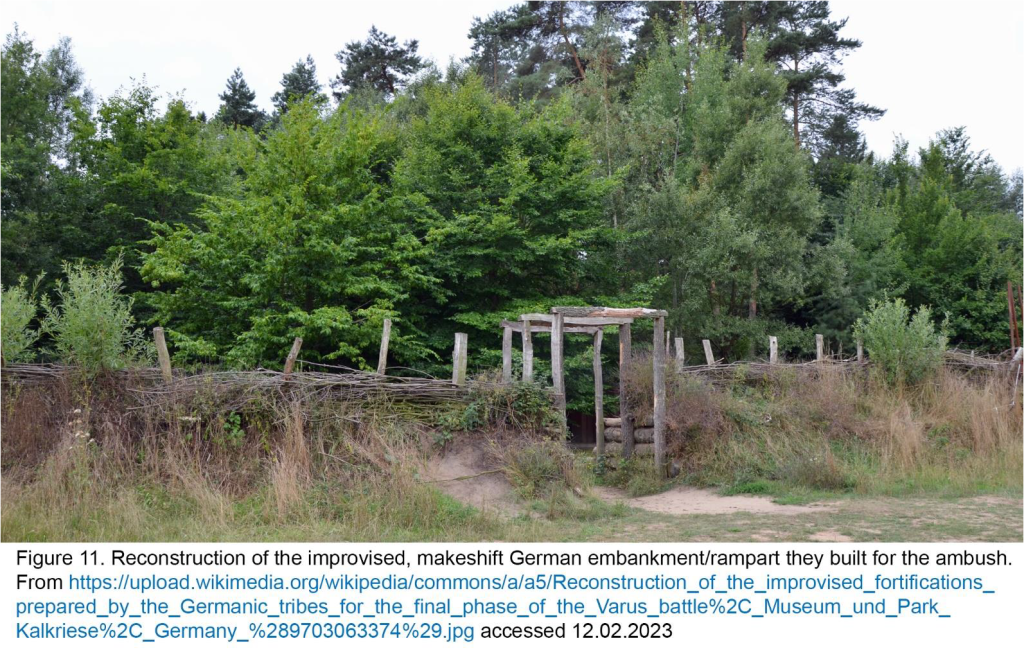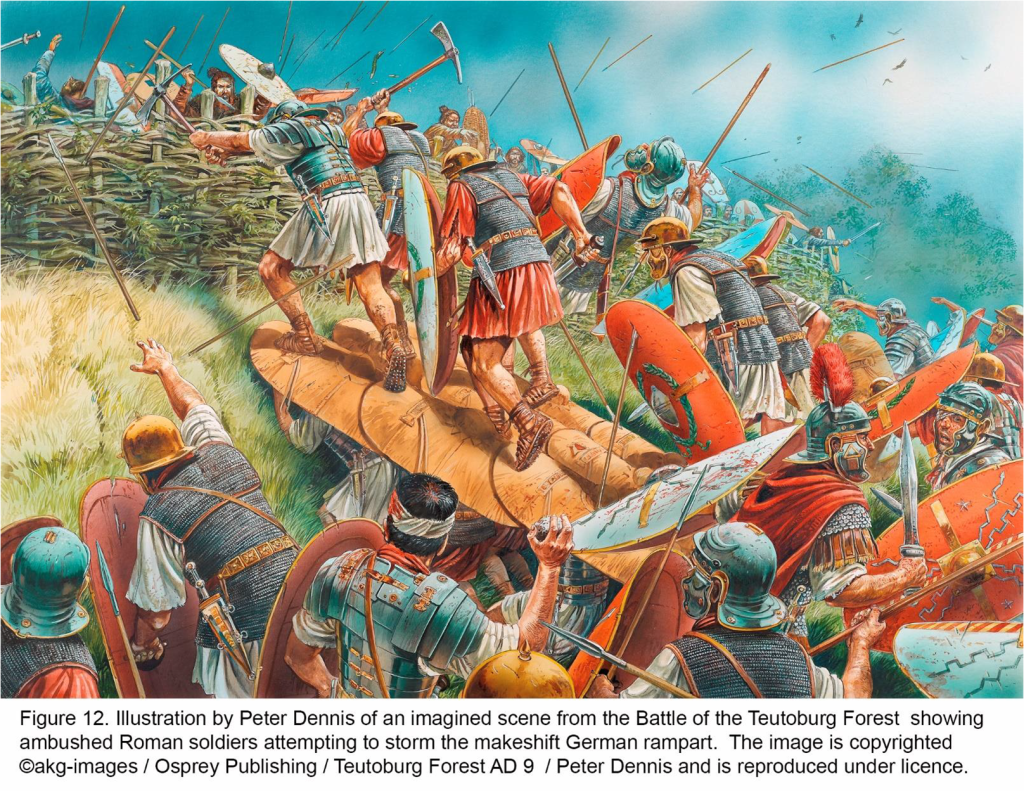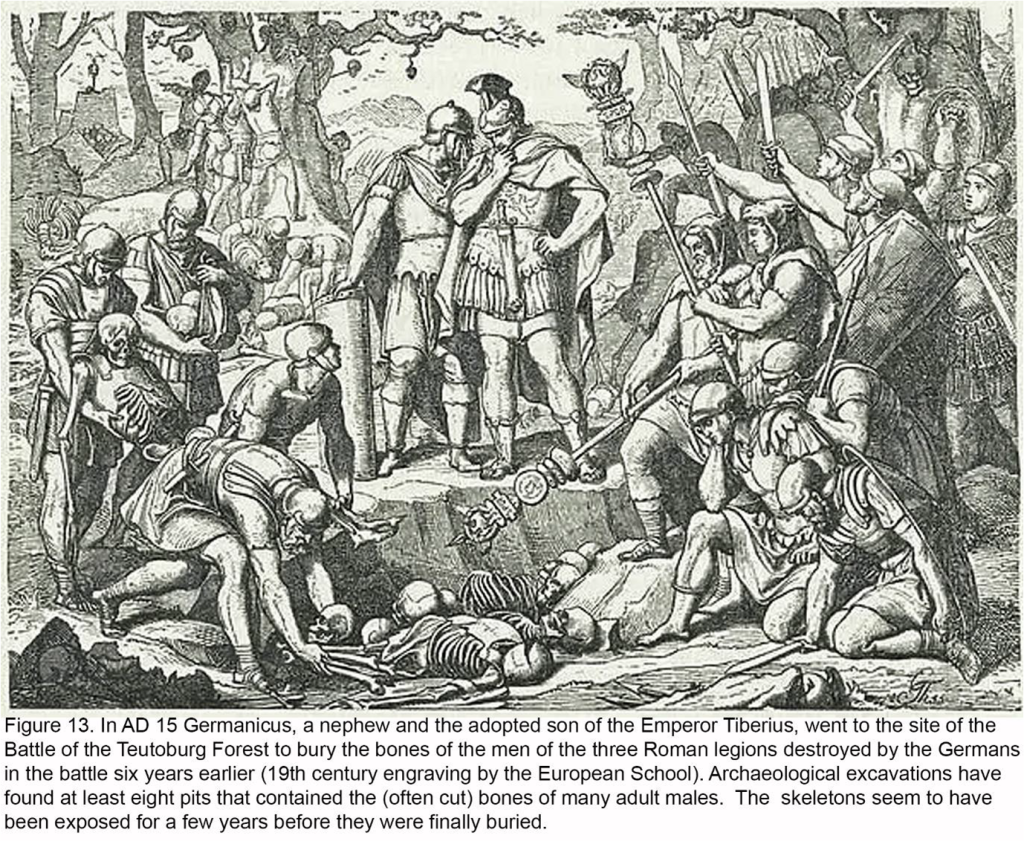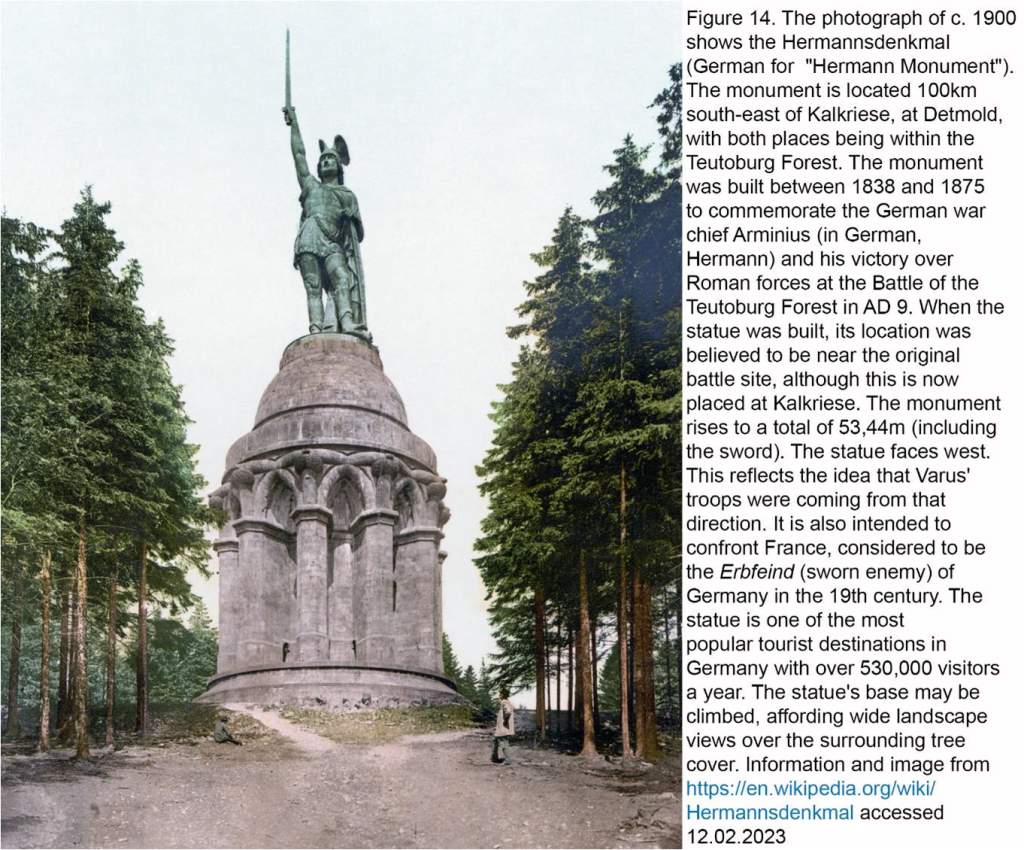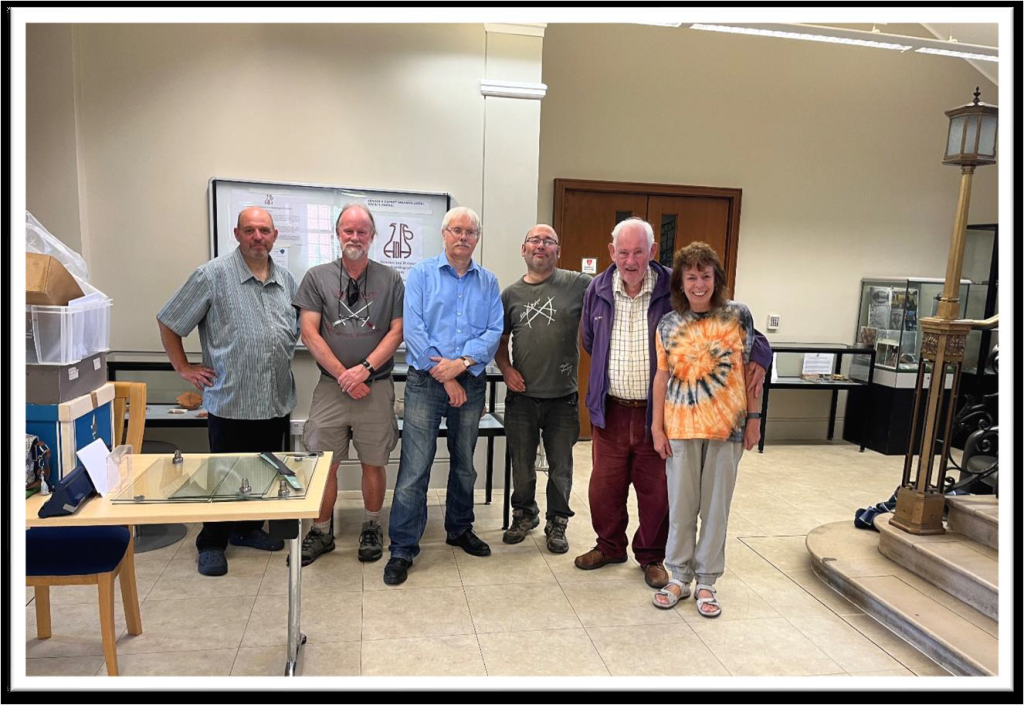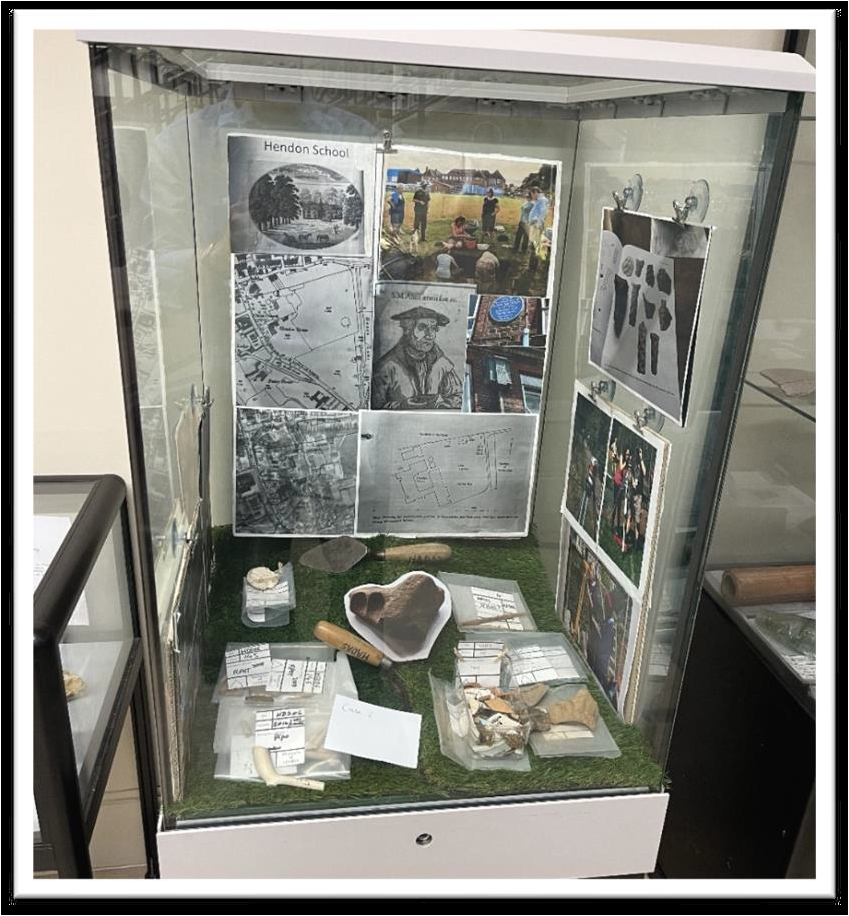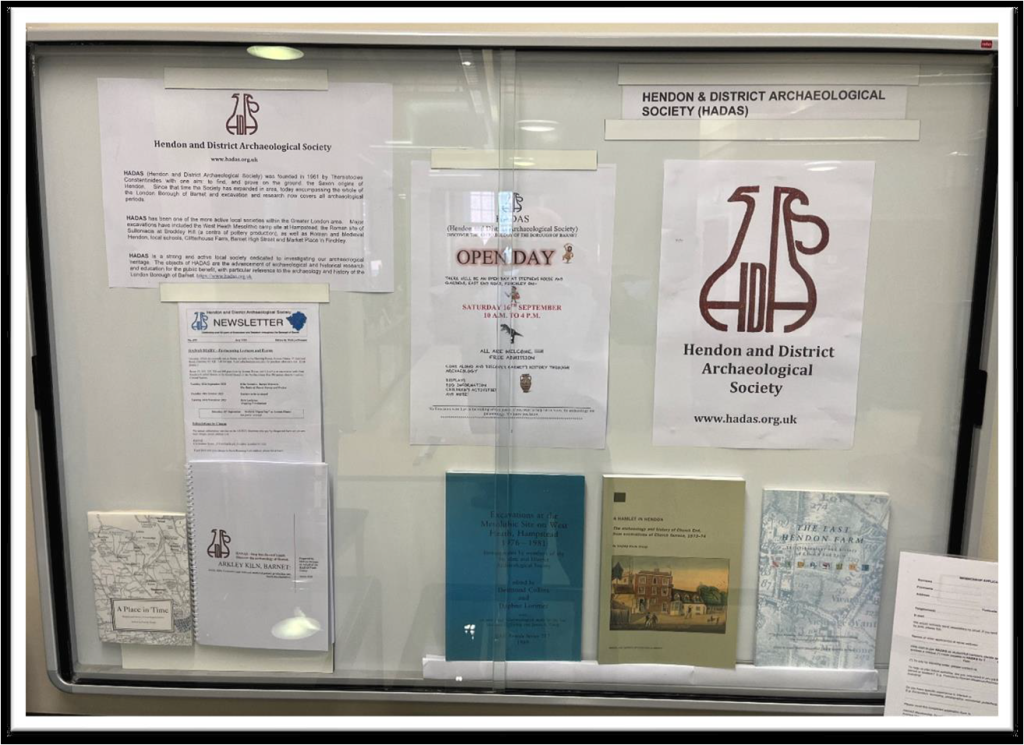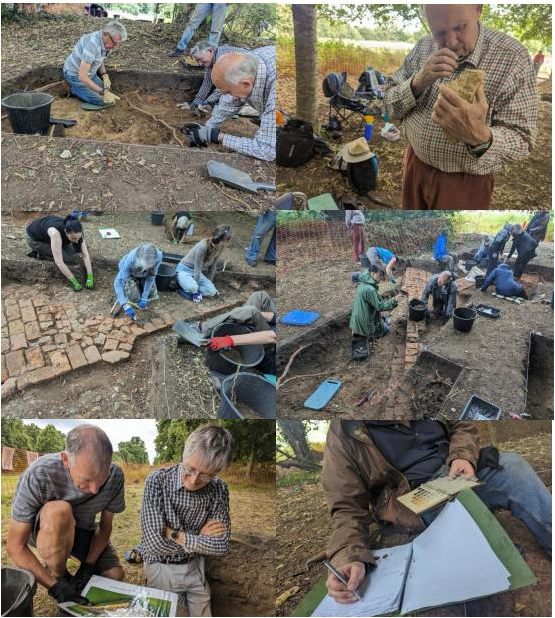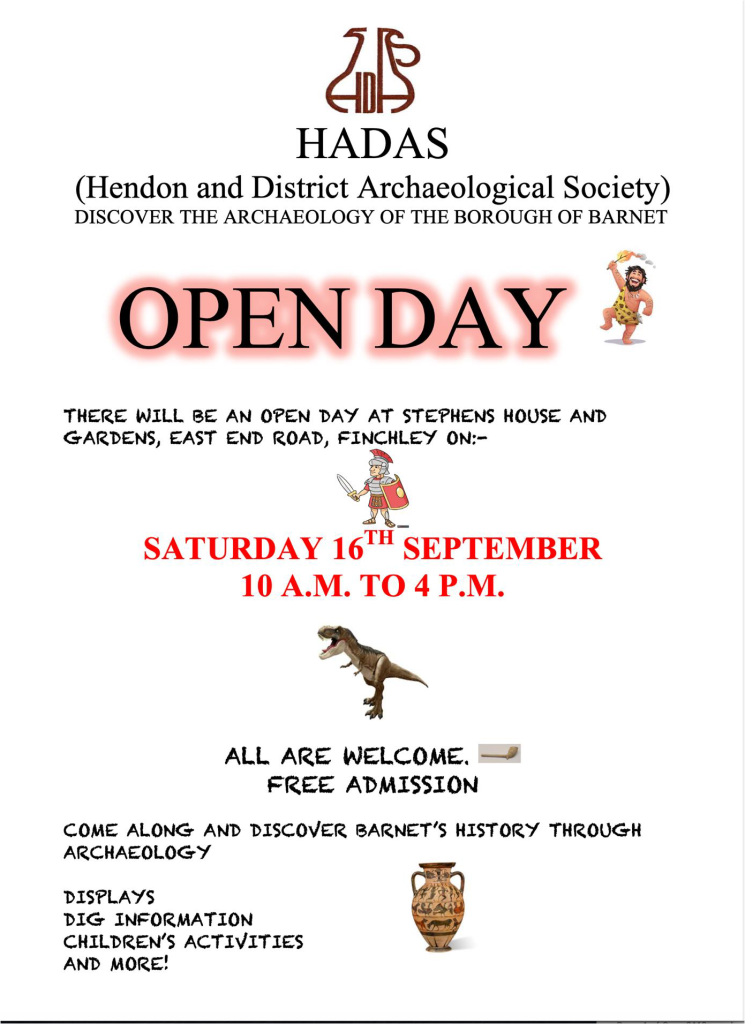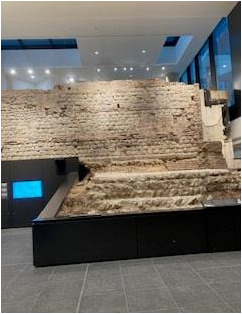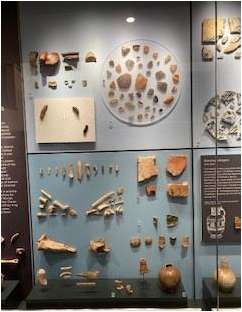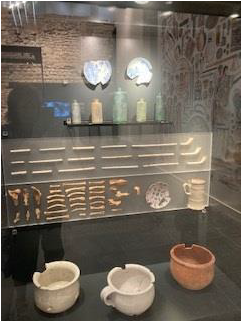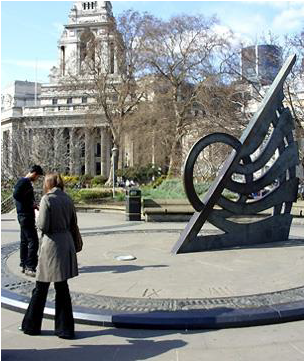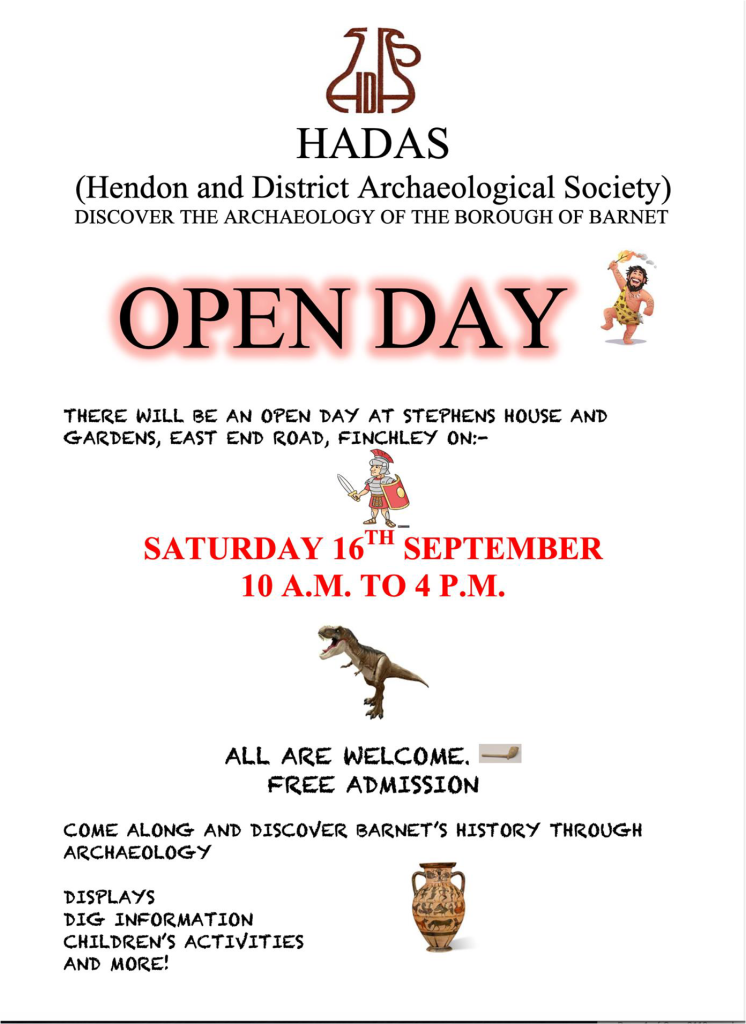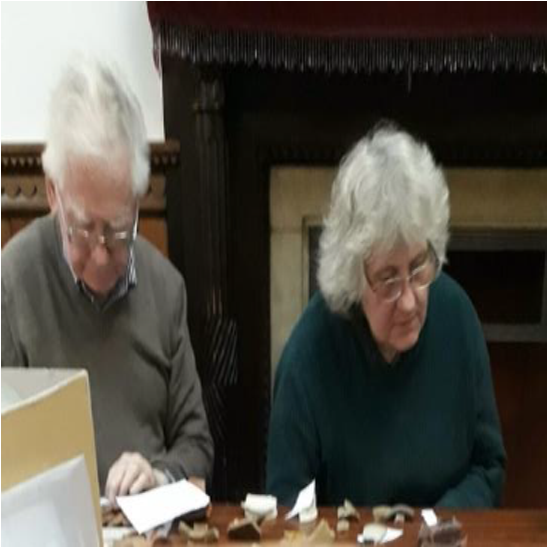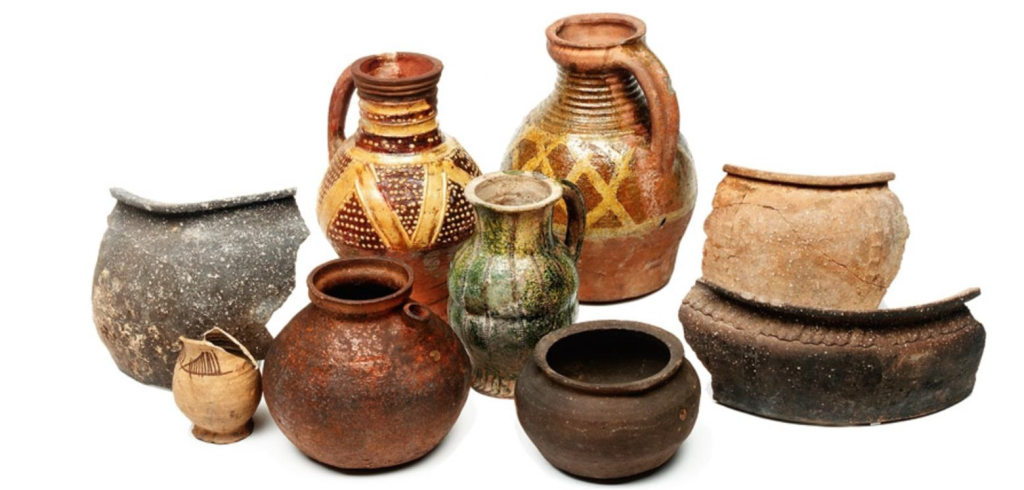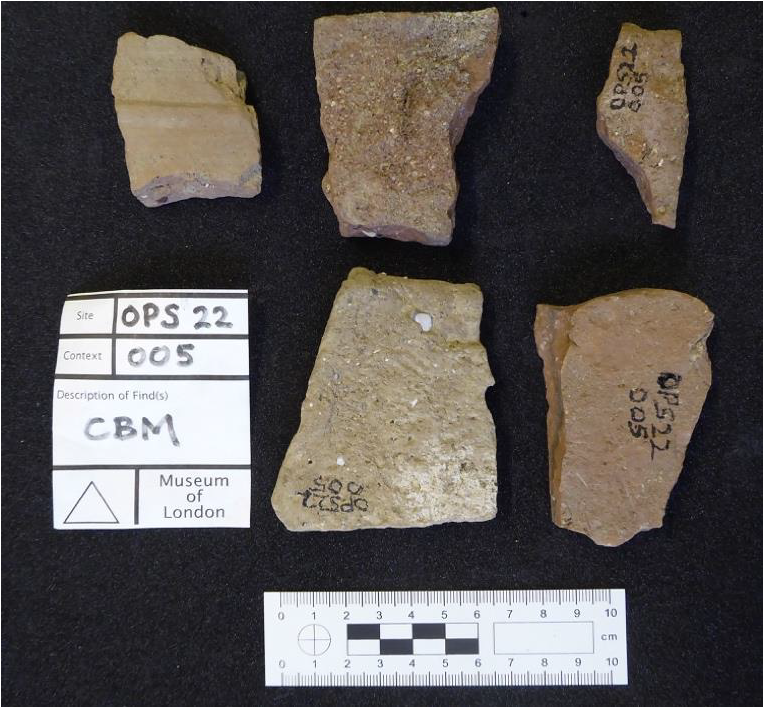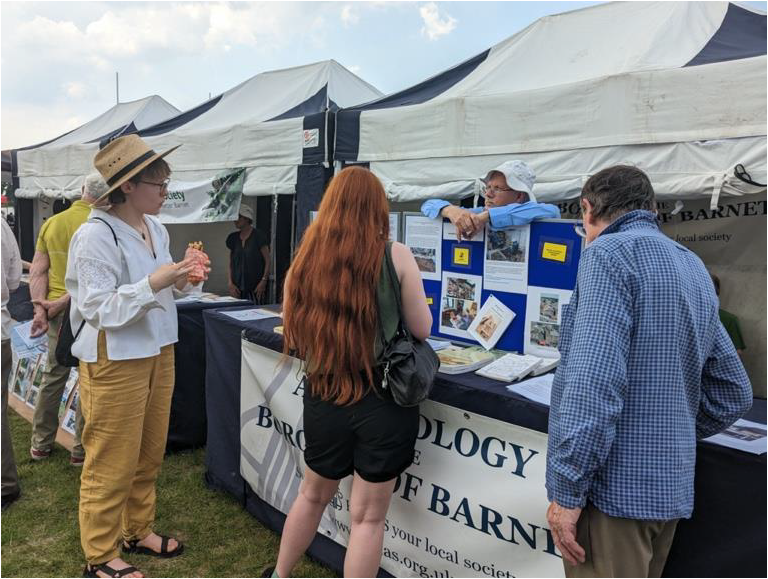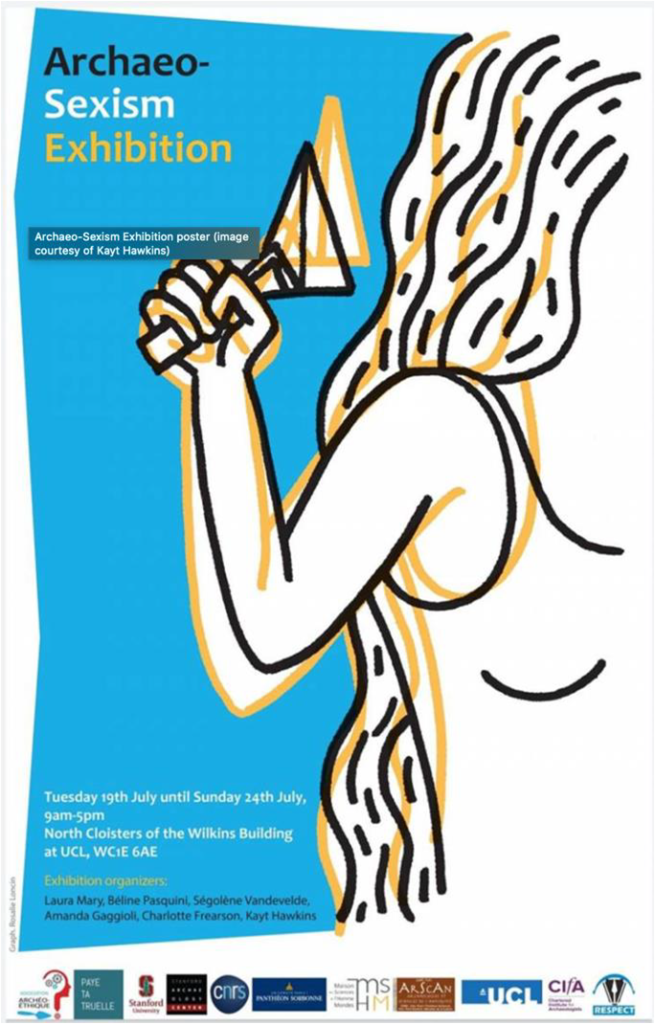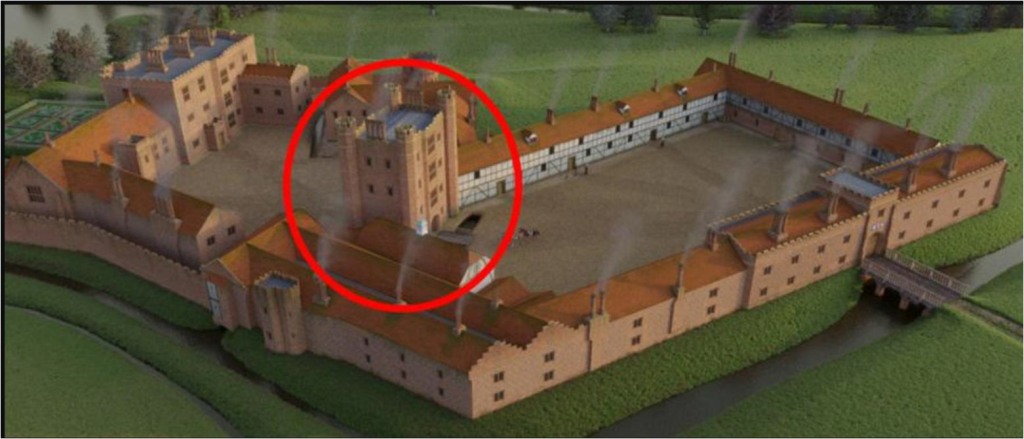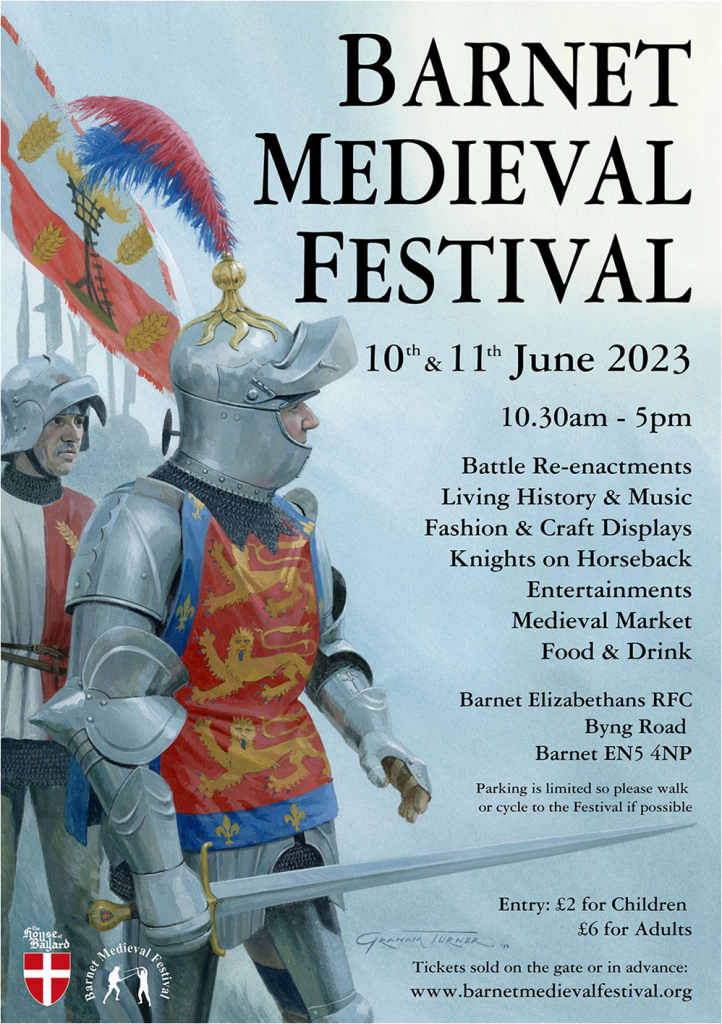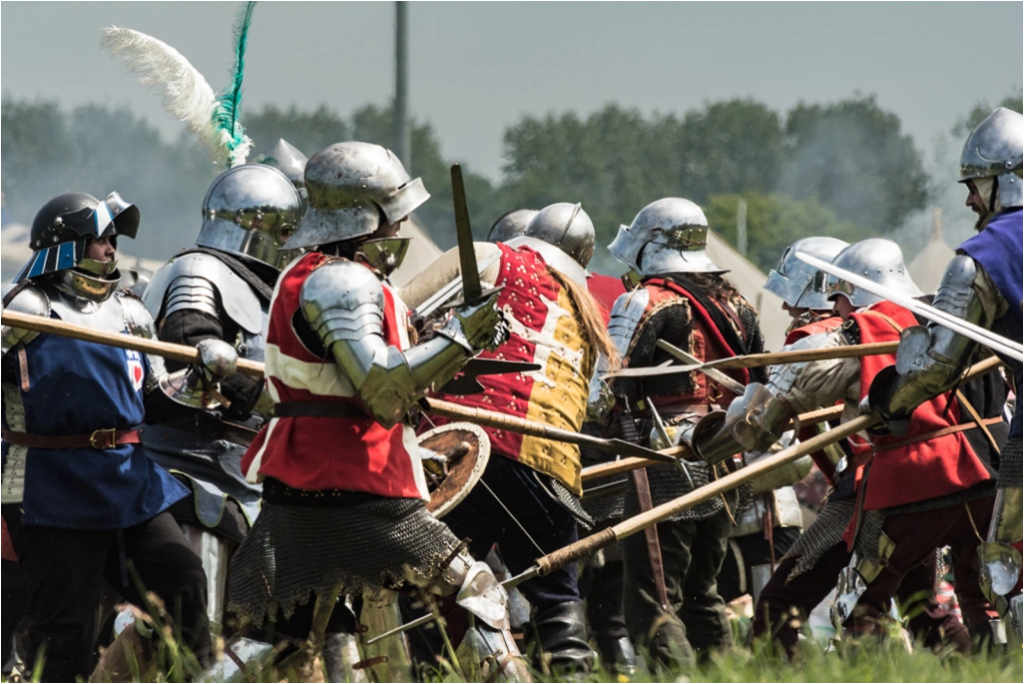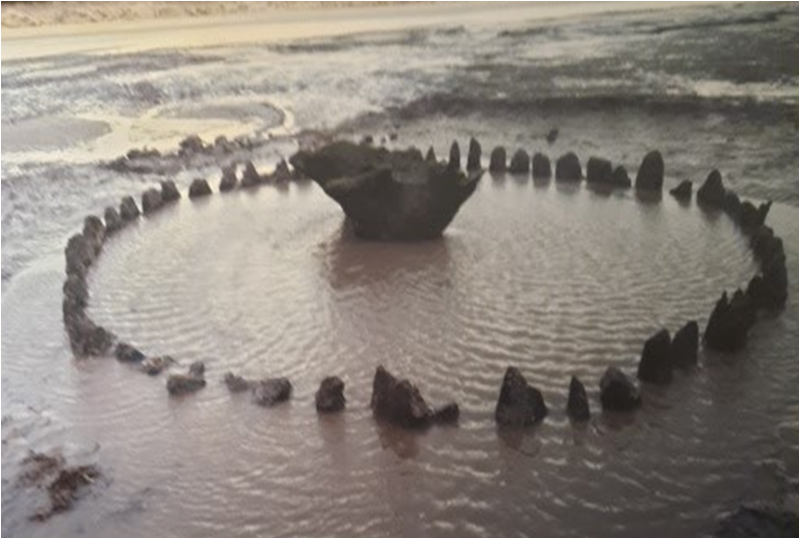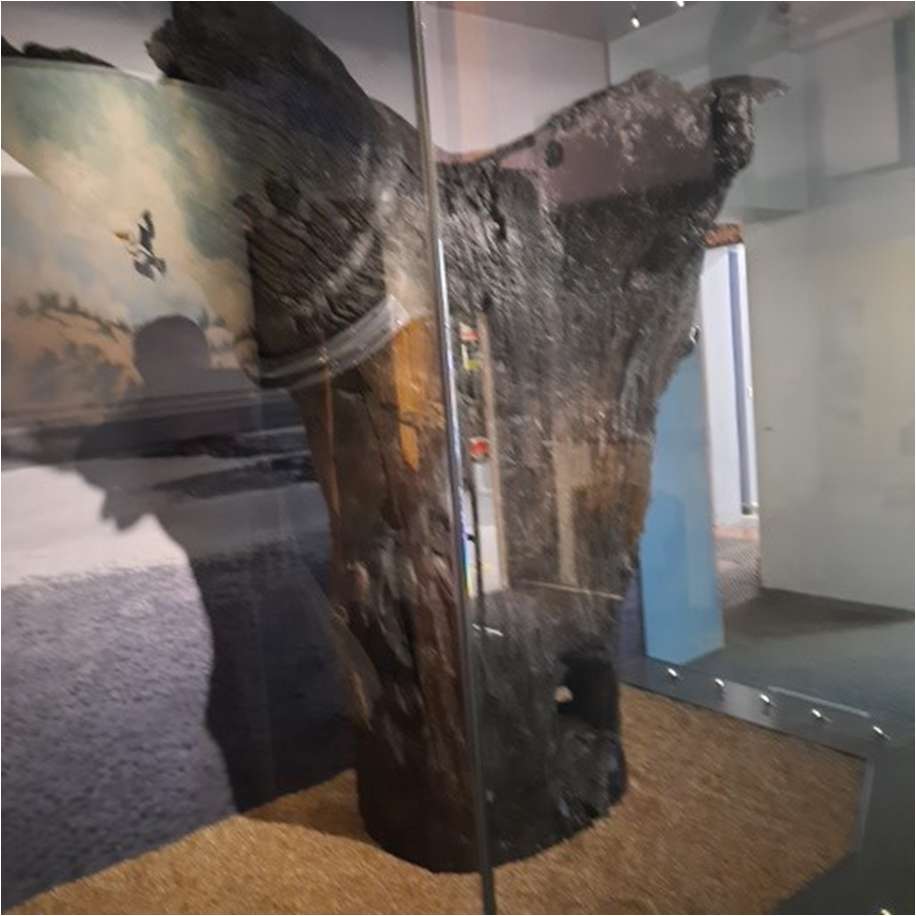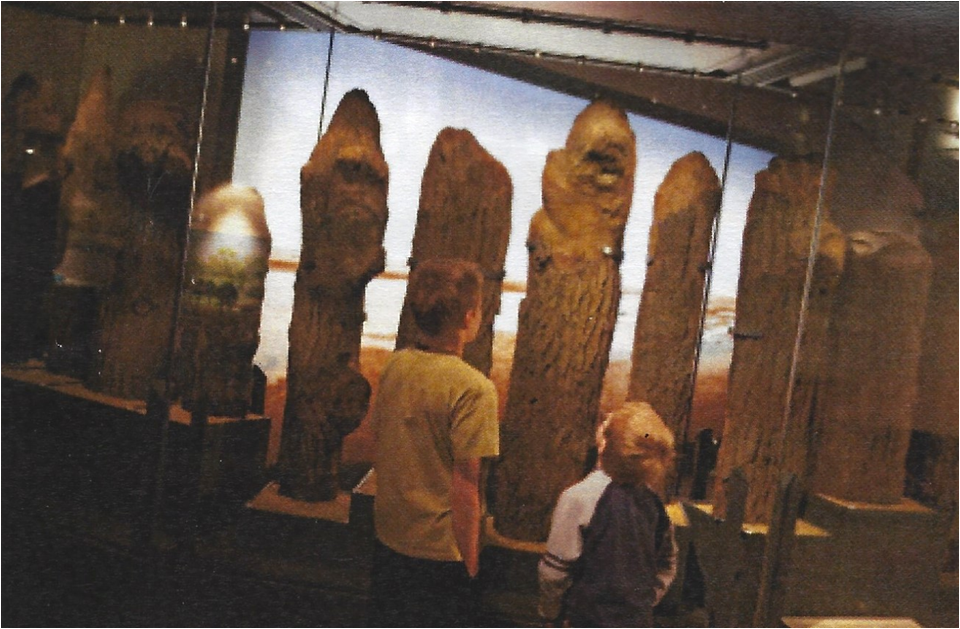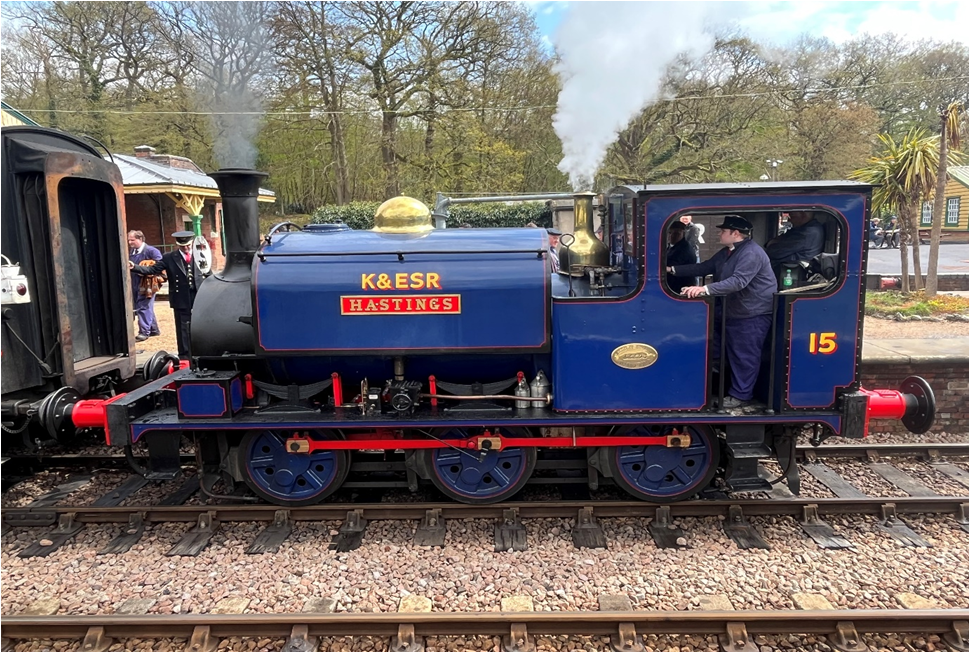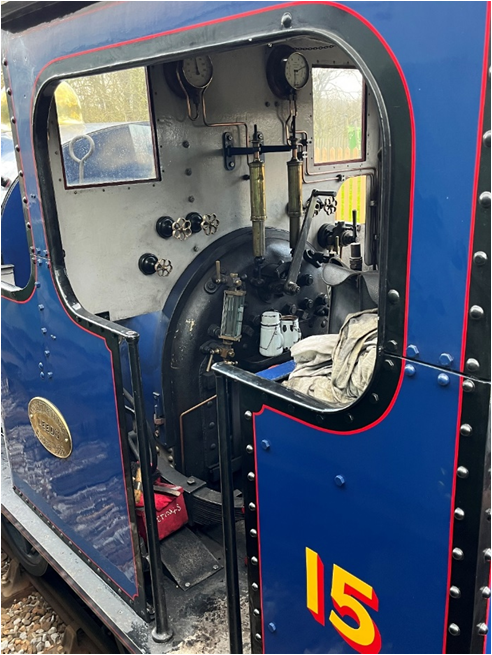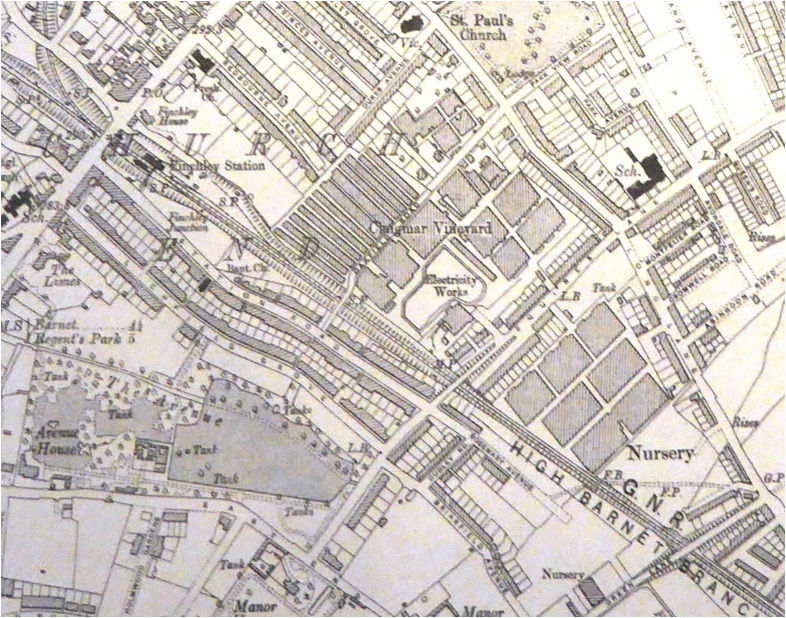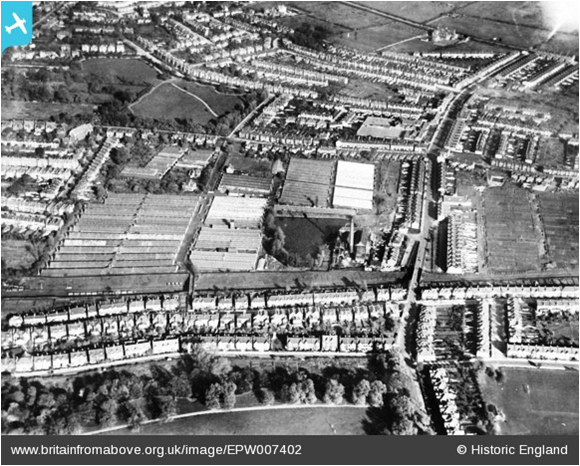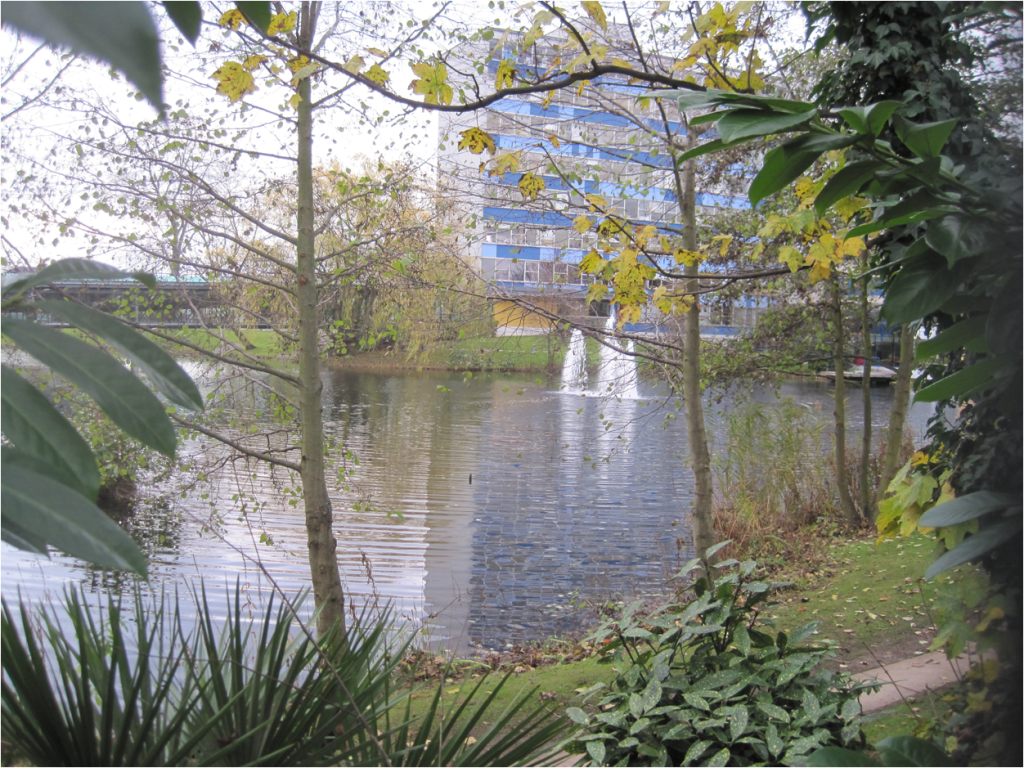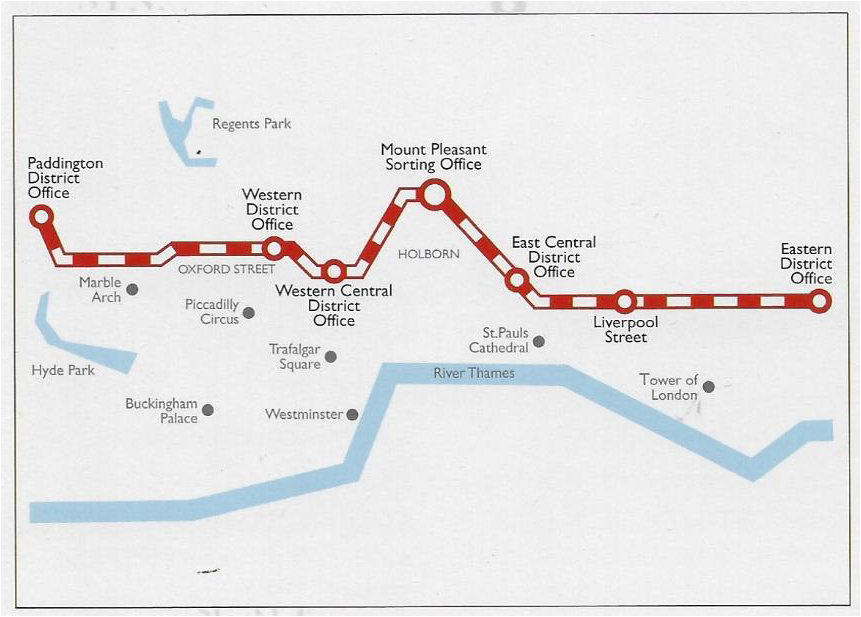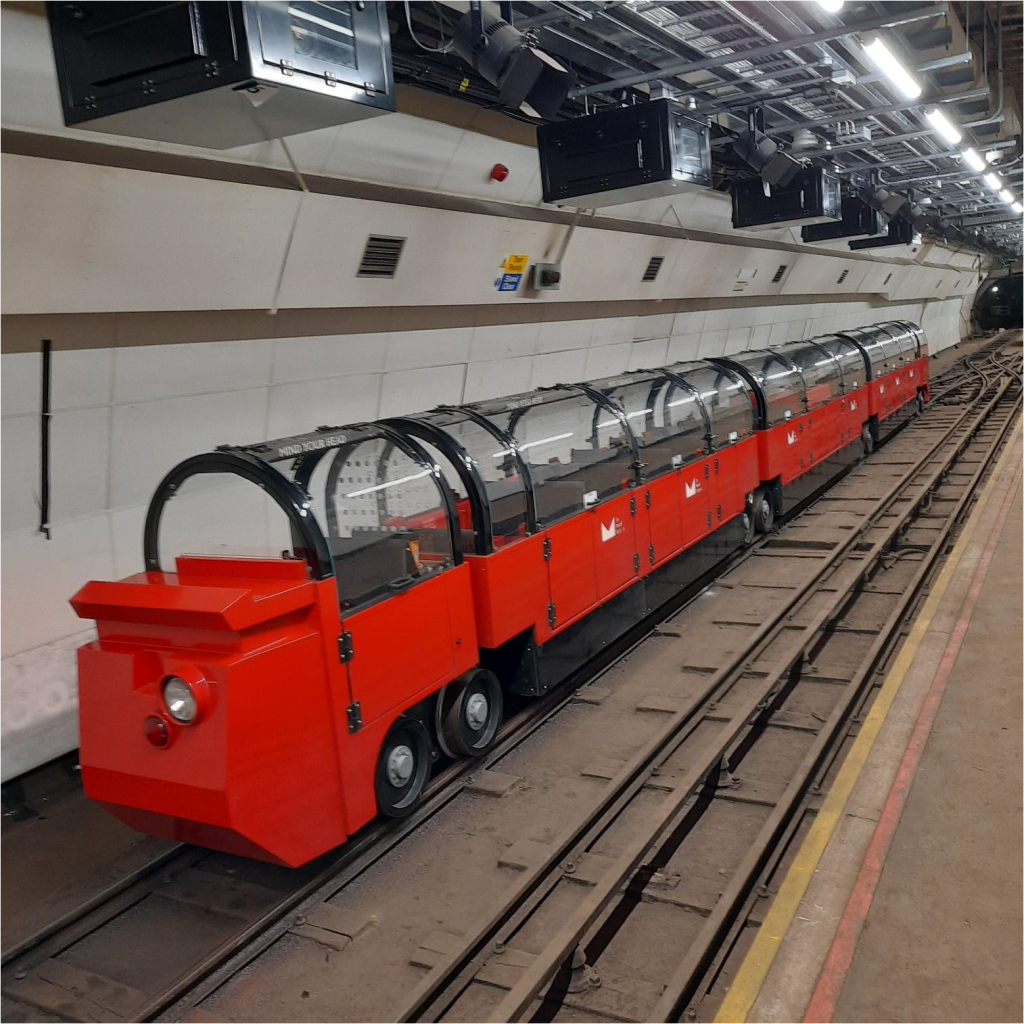
No. 635 February 2024 Edited by Andy Simpson
HADAS DIARY – Forthcoming Lectures and Events
Tuesday 13th February 2024: The Dorothy Newbury Memorial Lecture
‘A life in sherds‘
In this talk, HADAS President Jacqui Pearce looks back over half a century of developments in the world of ceramic studies in London, focusing particularly on fabric identification, the medieval and later pottery type-series, studies of excavated kiln sites, archaeological biography as seen in major household clearance assemblages, clay pipe studies and the importance of professional and non-professional archaeologists working together, especially through HADAS evening classes over several years.
Tuesday, 12th March 2024: ‘The Battle of Teutoburg Forest AD9; The Massacre of a Roman Army’
A Talk by Robin Densem. Newsletter readers will recall Robin’s excellent article on the battle- and the resultant loss of three legions- in NL631, October 2023.
Tuesday, 9 April 2024: ‘Traders, Bargees, Ferrymen and a Seagull; Life and Work in Roman Pisa’
A talk by Ian Jones, Chairman, Enfield Archaeological Society.
Tuesday, 14 May 2024: ‘London’s Roman Tools‘
A talk by Owen Humphries
Tuesday, 11 June 2024
Annual General Meeting, followed by a lecture by Jacqui Pearce: ‘Clay Pipes‘
Lectures held in the Drawing Room, Avenue House, 17 East End Road, Finchley N3 3QE. 7.45 for 8pm.
Buses 82, 125, 143, 326, 382, and 460 pass close by, and it is a five-ten-minute walk from Finchley Central Station on the Barnet Branch of the Northern Line where the Super Loop SL10 express bus from North Finchley to Harrow also stops.
Tea/Coffee/biscuits available for purchase after each talk.
1
Post-Excavation Work ANDY SIMPSON
Work on identifying and dating the considerable quantity of finds from the 17th October 2023 one day back garden trial excavation in East Finchley organised by Roger Chapman and undertaken by him and Janet Mortimer continues at Avenue House. The official site code HAY23 has been obtained by Bill Bass.
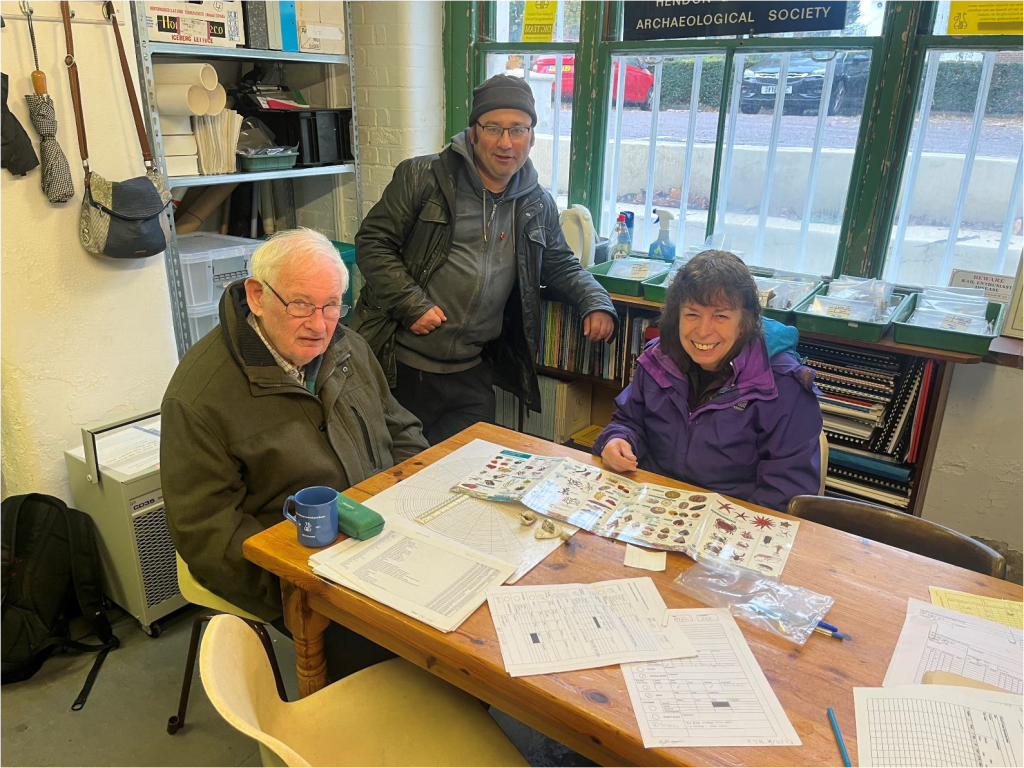
The Sunday team undertaking this work meet most Sundays,10.30 am – 1pm (ish) and visitors are welcome.
The next big Sunday project is likely to be the sorting and reboxing of the sizable ‘West Heath 1 (1970s) and 2’ (1980s) collection of flint finds and archive, long worked on and stored by Myfanwy Stewart, and now nearing publication.
2
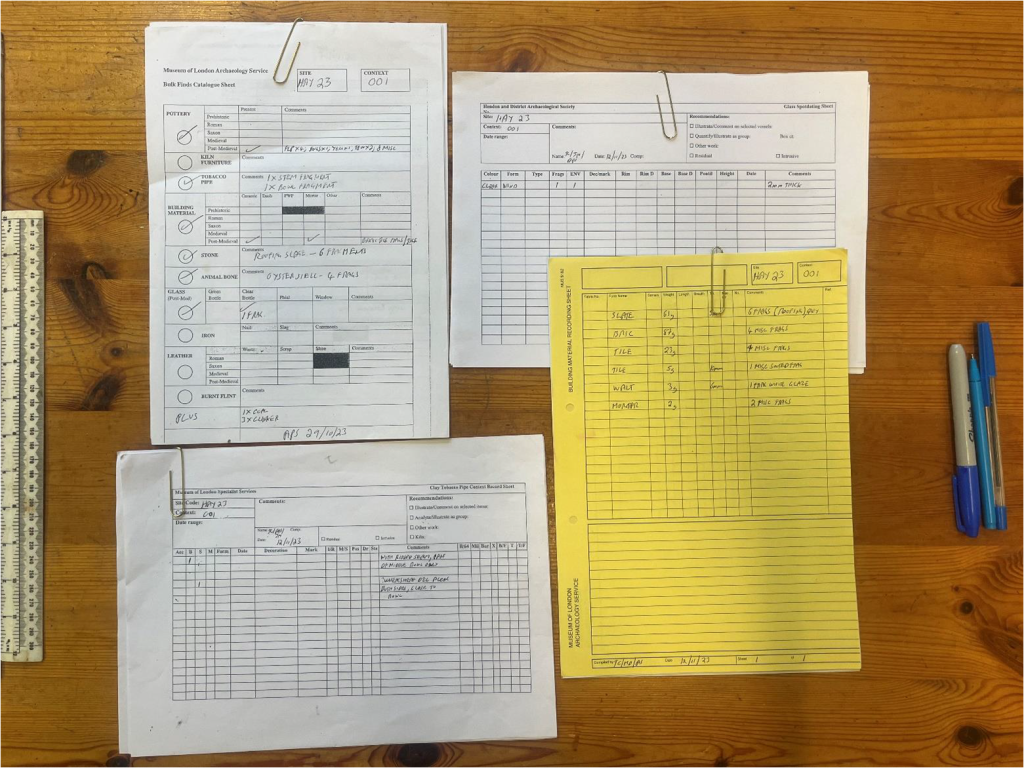
The pottery recording sheets and the small finds record sheet- admittedly with just four small finds on it, including one clay pipe bowl with maker’s mark on the spur, and an empty brass .303 calibre rifle cartridge! – have also been completed. Unusually, there were no coins to record – not even the usual 2p! The finds have now been marked up with site code and context number, just leaving the small matter of the final report to produce….
Advance Notice
Saturday 23rd March, 11 am. – 5.30 pm. L.A.M.A.S Archaeology Conference, Museum of London, Docklands, West India Quary, off Hertsmere Road, London E14 4AL., Tickets available via Eventbrite. Details and how to book on L.A.M.A.S. website. Please visit www.lamas.org.uk 11 am – 1 pm. Morning session – Recent Works; 2 – 5 pm. Afternoon session – The Department of Urban Archaeology (50th Anniversay) and the Department of Greater London Archaeology (40th Anniversary) including 4.30 pm. Top Ceramics from 50 years of Excavation in London. Talk by Jacqui Pearce (HADAS President) 5 pm. The Rose Theatre and the DGLA. Talk by Harvey Sheldon (Former HADAS President).
3
DRAINING THE WELSH HARP ANDY SIMPSON
Newsletter readers may remember that back in January/February 2021 the Welsh Harp (Brent) Reservoir, originally constructed 1834-35 to supply water for the Grand Union Canal, was temporarily partly drained to permit inspection of the main dam head wall and associated structures at the Wembley end of the reservoir, revealing the original course of the Silkstream. This was reported in my article ‘Welsh Harp Water Level lowered’ in NL600, March 2021.
Between mid-December 2023 and February2024 the whole reservoir was completely drained to permit essential statutory improvement works by the Canal and River Trust (formerly British Waterways) who manage the reservoir; the land around it is owned by the London boroughs of Barnet and Brent. This was to deal with issues identified during the 2021 inspection. Supported by funds from the Peoples’s Postcode Lottery, work will include repairs to the chains and rods that operate the reservoir’s sluices controlling the water levels in the reservoir and repainting of the Valve House Tower that houses the sluice mechanisms. A major removal of accumulated rubbish and litter is also planned along with wildlife habitat improvements in this 170-acre site of Special Scientific Interest (SSSI)- over 200 bags of litter being removed by volunteers on 13 January alone; a Victorian knife and ‘old gun’ were also recovered.
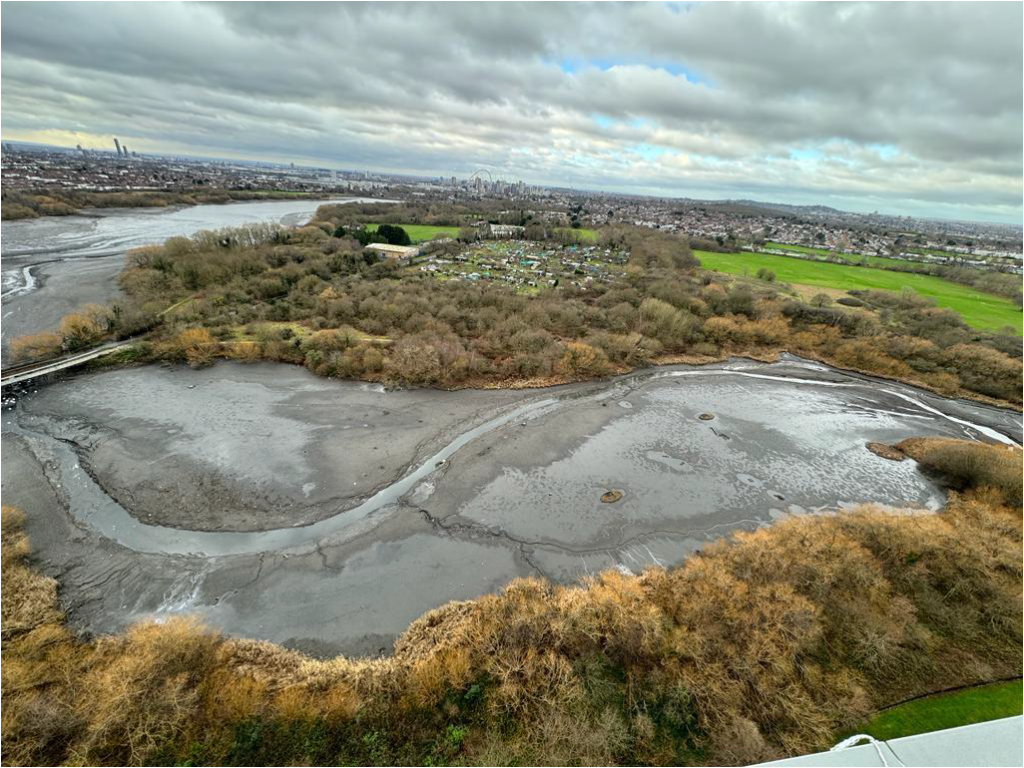
4
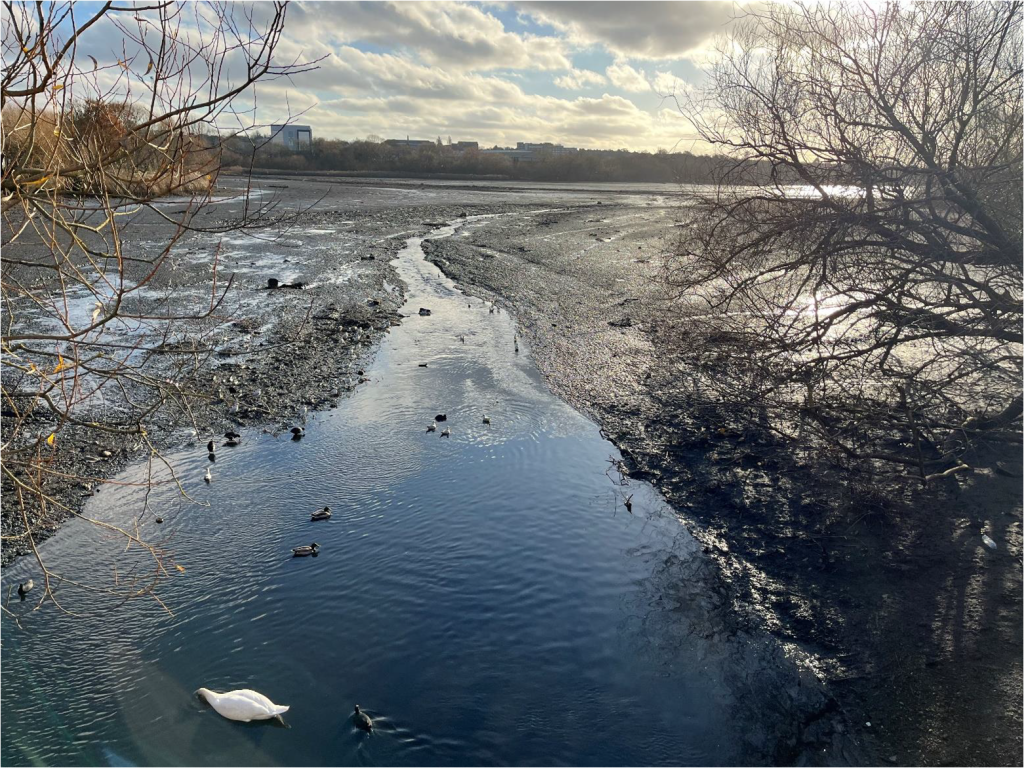
An open day was due to be held at the Welsh Harp on 3 February 2024 to give visitors a chance to see ‘what lies beneath the surface’ and visit the sluice gates and see the drained reservoir bed up close. When full, the reservoir contains over one million cubic metres of water – enough to fill 400 Olympic swimming pools.
Also related are developing plans for work on the West Hendon playing Fields. Barnet Council wants to ‘transform West Hendon Playing Fields into an exciting new park …The new park proposals will include new play areas, recreational spaces, sports facilities, improved infrastructure, and expanded leisure amenities’ Although supposedly intended to enhance local wildlife and biodiversity, whilst inclusively serving the ever increasing population ofWest Hendon/Edgware Road tower blocks with opportunities for physical activity and recreation, it is to be hoped that this does not mean the destruction of the pleasingly semi-wild nature of the area. The most recent public consultation on these plans, originally propped in a 2019 Master plan, closed in December 2023. The following link to an earlier consultation (also now closed) includes a useful map of the area and the proposed changes;
WEMBLEY MATTERS: Respond to Barnet’s plans for West Hendon Playing fields at consultation meeting tomorrow. It is expected that the reservoir will be refilled with water in April 2024.
5
COLINDALE STATION REBUILDING ANDY SIMPSON
Helped by Government Levelling Up funding, work to redevelop the Northern Line Edgware Branch’s Colindale station site by Transport for London begins Spring 2024. Before it all changes. I thought I had better record the existing structures, whose demolition and replacement by new structures will in part necessitate closure of the station and the line from Golders Green to Edgware from 2 to 11 April 2024 and similar weekend closures for much of June, followed by a longer closure period in the summer and autumn of 2024 to be announced.
The current entrance hall, opened in December 1962, was originally built as part of a large office development, since demolished. This replaced a temporary structure erected in 1960 in place of the original entrance building, opened on Monday, 18 August 1924 as part of the extension of the then London Electric Railway’s line over the three miles from Hendon Central to Edgware via Colindale and Burnt Oak; work on this had begun in November 1922. This temporary booking hall stood on the plot of land occupied from 1964 by the 28-space car park which has just closed as part of the redevelopment.
The Portland stone Doric colonnade portico frontage and booking hall of the original Georgian style red brick building of 1924, which had been designed by Underground Group architect S.A. Heaps, was completely destroyed by two direct hits by German high explosive bombs including a landmine on the night of 25th September 1940 during the London Blitz, killing 13 people including four RAF Hendon airmen in a train that was entering the station at the time of one explosion; many other people were injured, the adjacent Colindale hospital also being hit. King George VI and Queen Mary visited the following day to inspect the damage, accompanied by the Mayor of Hendon. An initial wooden temporary replacement structure was then erected.
A memorial plaque to the civilians and London Transport staff was unveiled on the station concourse on 25th September 2012, the anniversary of the raid.
The current building will be replaced by a large new entrance hall to be flanked by large multi-story blocks of flats and, for the first time, a lift giving step-free access from the street to platform level. The new structure will have a hybrid timber and steel roof structure, the laminated timber being intended to reference early aeronautical engineering in the area with personalities such as Claude Grahame White.
As well as the upgrades to the tube station, a new residential and commercial development will be built on the old ticket hall and car park site comprising 313 new homes, half of which should be ‘affordable’. For images of the new development see
Colindale and Leyton tube stations set for £43.1 million step-free upgrades (ianvisits.co.uk)
6
Some of the historical details above, and much else besides on our local underground lines, can be found online in archive editions of the London Underground Railway Society’s monthly journal:
https://www.lurs.org.uk/historicalarchive.htm
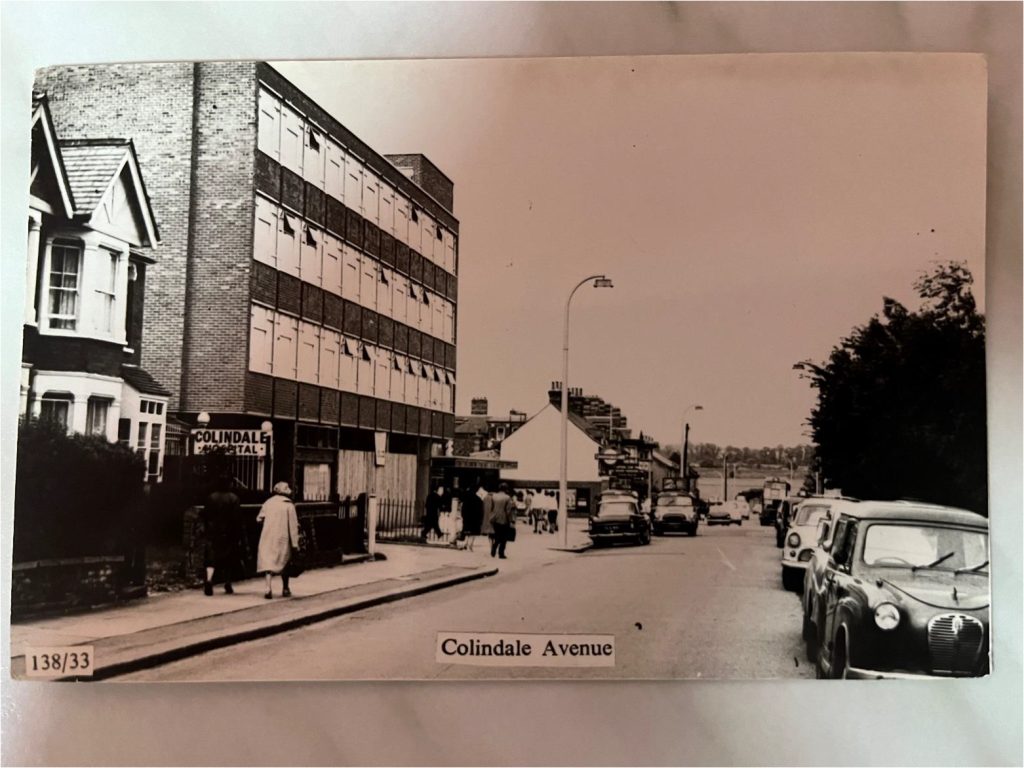
During the summer of 2011 this office block – ‘Colindale Station House’ – was demolished to make way for new residential developments on the site.
Your editor has fond memories of the Hannants aviation/military book and model shop on the ground floor back in the 1990s, latterly moved to a nearby industrial estate and replaced by a supermarket and off-licence until closure for demolition.
7
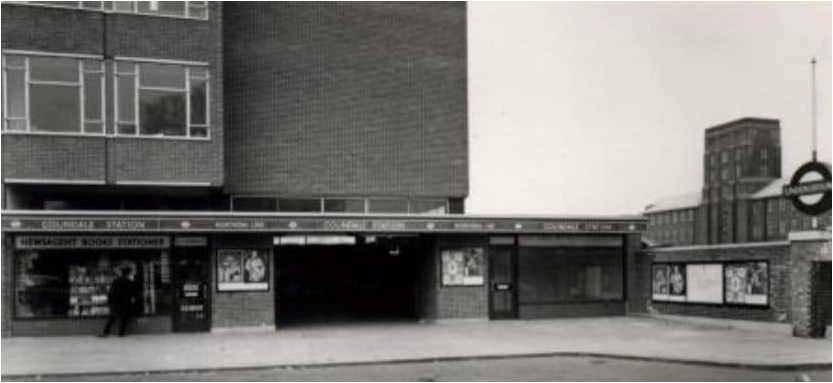
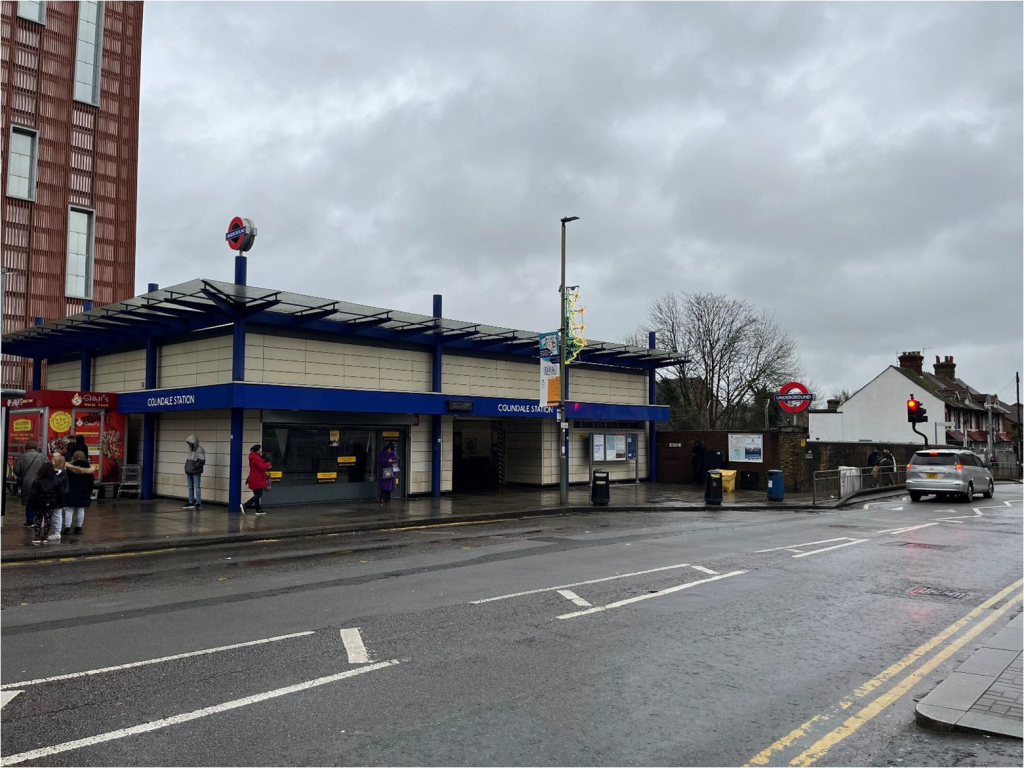
8
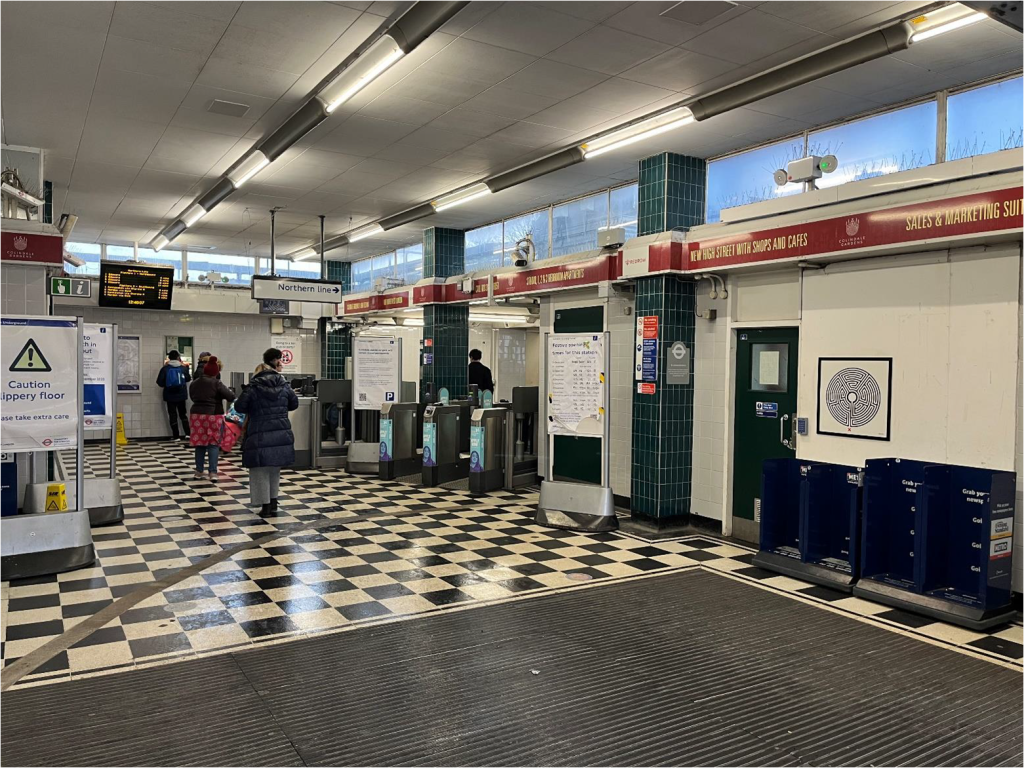
WHEN IS A CASTLE NOT A CASTLE? JANET MORTIMER
When we talk of castles, we tend to think of them either as magnificent surviving structures like Edinburgh Castle or glorious ruins like Kenilworth Castle. However, Oakham Castle in the county town of Rutland is a complete exception. There is a small amount of the original castle walls which you could easily walk past without noticing and part of the motte survives – but it has to be signposted so you know what it is. However what does survive is the magnificent Great Hall which was built between 1180 and 1190 and is acknowledged as one of the finest examples of domestic Norman architecture in the country.
Inside the Great Hall is a surprise as the place is adorned from floor to ceiling with horseshoes. It has become a custom for visiting dignitaries to commission a decorative horseshoe commemorating their visit, and there are many from the Royal family, including the late Queen and Prince Philip and even Queen Victoria when she was still Duchess of Kent.
9
There are conflicting theories about how the horseshoe tradition started but the oldest one dates from 1470. There is even one from Time Team when they dug around the Castle in 2012.
In my view, the best thing about this Castle is that it is still very much at the heart of the community. Not only is it a visitor attraction which you can visit for free most days, but it is also used for weddings, gatherings and parties. And to retain its status as one one of the country’s longest continually used courts, a Crown Court session is held there once every two years. Presumably these days people are not sentenced to a stint in the stocks, which still exist outside the castle in the Buttercross – a type of market cross dating back to the 17th century.
Right: Oakham Castle
10
Other Societies’ Events Eric Morgan
As always, please check with the societies – for example via their websites – before planning to attend in case of any late changes, since not all societies and organisations have returned to pre-covid conditions.
Monday 12th February, 3 pm. Barnet Museum and Local History Society, St. John the Baptist Church, Chipping Barnet, Corner High Street/Wood Street, Barnet, EN5 4BW. Historic Hendon. Talk by Rhiannon Watkinson. Please visit www.barnetmuseum.co.uk for details.
Tuesday 13th February, 6 pm. L.A.M.A.S. Lecture Theatre, G6, Institute of Archaeology, U.C.L, 31-34 Gordon Square, WC1H 0PY. AGM and Presidential Address given by Professor Vanessa Harding on Mapping Medieval London. Also on Zoom. Details on Eventbrite. Booking essential. Please visit Lectures (lamas.org.uk).
Wednesday 14th February, 2.30 pm. Mill Hill Historical Society. Trinity Church, 100 The Broadway, NW7 3TB. Please note there is a change to the talk shown in the January Newsletter. It is now a talk on Ayrton House, The Ridgeway – by Honor Barrett, with a brief history of the National Institute for Medical Research Centre, where this now stands. Please visit www.millhill-hs.org.uk.
Friday 16th February, 7 pm. C.O.L.A.S. Talk on Zoom. How London Got Its Walls. Some Stories of Third Century Resurrection Gleaned from Archaeological Discovery – by Dominic Perring (I.o.A). Preceded by a A.G.M. Please book via Eventbrite. Visit City of London Archaeological Society (colas.org.uk).
Friday 16th February, 7.30 pm. Wembley History Society. St. Andrew’s Church Hall (behind St. Andrew’s new church) Church Lane, Kingsbury. NW9 8RZ. Decolinising Wembley. Talk by Nabil Al-Kianai. Examines the legacy of the 1924 Wembley Exhibition. The echoes of Empire that still resound. Visitors £3. Refreshments available afterwards.
11
Tuesday 20th February, 2-3 pm. Eclectic Tours. Headstone Manor Museum, Pinner View, North Harrow, HA2 6PX. What was The London Aerodrome? Talk by Lisa Lu. Explains more about the London Aerodrome before it became RAF Hendon, cost £2.50. Please book on Tuesday Talk: Tuesday Talk: What was the London Aerodrome? – Headstone Manor Museum.
Also, Saturday 24th February, 1-3pm. Discovering Colindale and Its Role in Early Aviation. Colindale (or Hendon as it was known back then) was synonymous with flying. Learn about early Aviation and other factories and important institutions in the area. This is a tour and costs £15. For more information and to book got to WALKS & TALKS (Eclectic Tours – Walking Tours – London, England (eclectic-tours.com)).
Saturday 24th February, 9.30 am – 5 pm. Current Archaeology Live 2024. U.C.L Institute of Education, 20 Bedford Way (off Russell Square), London WC1H 0AL. Wide range of expert speakers sharing latest Archaeological finds and research. Also Archaeology Fair and Photography competition from Current World Archaeology. Also the Current Archaeology awards will be announced at 5 pm. Tickets on sale at standard price of £60. To book please visit Current Archaeology Live! 2024 – Current Archaeology or call 0208 819 5580. The keynote speech will be Behind The Scenes of The Team – 30 Years in the Media Limelight given by Dr John Gater. The Fair has lots of stalls with travel companies, booksellers and other Archaeological organisations.
Thanks to our other contributors this month; Eric Morgan; Janet Mortimer.
Hendon and District Archaeological Society
Chairman: Don Cooper, 59, Potters Road, Barnet EN5 5HS
(020 8440 4350) e-mail: chairman@hadas.org.uk
Hon. Secretary: Janet Mortimer, 34, Cloister Road, Childs Hill London NW2 2NP
(07449 978121) e-mail: secretary@hadas.org.uk
Hon. Treasurer: Roger Chapman 50 Summerlee Ave, London N” 9QP
(07855 304488) e-mail: treasurer@hadas.org.uk
Membership Sec.: Jim Nelhams 61, Potters Road Barnet EN5 5HS
(020 8449 7076) e-mail: membership@hadas.org.uk
Website at: www.hadas.org.uk
Join the HADAS email discussion group via the website.
12
